July 2019
29th July - Last week we had the hottest July day on record, with temperatures just under 40C, and with such high humidity as well, working outside was challenging. Across most of the country, there were fierce extensive and long lasting lightning strikes and thunder, with torrential rain too, while here... a couple of hours of sprinkly rain and no storms to admire at all, so watering is still the order of the day. At least it is slightly cooler now, which is something, and I am crossing my fingers that the rain that is forecast for later in the week actually falls and does not evaporate before it hits the ground!
Thank you for all the positive comments on the insect photos from last week.. glad you enjoyed looking at them. In the same vein, here is one of a less common insect my youngest granddaughter spotted at the weekend, which was sitting on the side of the bath we use to store water: a Lesser Stag Beetle. You can tell it is not a female Giant Stag Beetle because it is black, rather than deep chestnut brown, and it is not shiny.
These are both protected species though, and the sighting has been logged on the Peoples' Trust for Endangered Species (PTES) website, in their annual Stag Beetle survey. We added two sightings of these Lesser Stags last year, so it does look possible we have a small breeding colony in the vicinity of the plots. We do have lots of rotting logs around, and their larvae live on rotting wood, taking several years to develop into an adult beetle. "Our" one hasn't got the distinctive knobs on its antennae that males show, so I am guessing this is a female... hope it finds somewhere suitable to lay eggsS
o after that excitement, let's move on to Harvest Monday. There are two "firsts" on the tablle this week: Basil and Black Tuscan Kale
-
The Basil is growing under cover and has at last bulked up enough to have enough for a proper harvest> This went into a Tomato Salad, which did its fresh taste justice.
-
And the Kale, which started off as such puny, unpromising looking plants, has really come into its own now, and this first picking was served steamed, with butter and black pepper
Carrots are an almost daily inclusion now, and it is good to have so mnay they can be used chopped very finely , with Onions, to give body to other dishes, such as lasagne.
Courgettes are gradually speeding up production, and all three plants contributed to this week's pikcings: greeb=n Parthenon in the polytunnel, yellow Zephyr with their pale green noses and Goldrush.
(They are all shiny because I had to wash them when I got home. The box upended on the path by the car and everything was dusty)
Lettuces are still available whenever needed, and this week's beauty is Lollo Rosso, grown from some tiny seedlings gifted a few weeks back. Just the right size to include in a side salad.
Several of the remaining Lettuces are going to seed, so will be pulled out in a day or two, when I shall take them off to feed my daughter's chickens, who will no doubt, enjoy feretting through them for bugs and beasties,as well as gobbling up the leaves at great speed
Lettuce seed germinatiton rates greatly reduce when soil temperatures are above 20C, so I haven't sown any more right now, as it seems unlikely to have been successful. I might try some indoors in a small pot of compost, where things may be cooler. This means there may be a bit of a gap in Lettuce supply, which will be a shame. I'll do my best
Spring Onions are still plentiful, even if some of them are a bit lopsided where the leaves of Red Cabbage are growing above them. It doesn't seem to affect their taste though. They are very versatile, and right now are making a good substitute for Chives, which were looking pretty shabby. I have cut them back to encourage succulent new leaves to grow, which, as long as I keep them well watered, shouldn't take too many weeks
Summer Radishes are now at an end though, and as I haven't had much success with mid Summer sowings, I shall probably have a break from sowing more until conditions are a little cooler. It will soon be time to sow the Winter varieties, and I was really pleased to find some seeds of those lovely juicy Pink Moon and Blue Moon ones that grew so well over the Winter in the polytunnel last year, on sale at a local garden centre, and at a reduced price too!
On the Plots
Last week may have been all about the beneificial insects, but this week it has been time to defend against one of the scourges of the Summer... Small White Butterflies. These sneaky little pretties can fold their wings to get through smaller holes than you would think possible, crawl sideways at ground level to get underneath netting, and even poke their pointy little bottoms through netting to stretch out to any leaves close to the edge, and lay eggs on them
I have tried to seal up small tears in the netting over the large brassica cage with clothes pegs, but the netting itself is now several years old and more and more holes seem to appear in the roof of the cage. When I saw three,(three no less!) having a butterfly party in the cage, I saw red, and got out the remaining piece of nice new fine mesh from the shed, and secured it over the top, and half way down the sides, which is at far as it reached. That's kept them out!!! Of course, I then to to go over every leaf of the plants inside, searching for the single tiny yellow eggs they lay, or the green caterpillars from eggs laid previously. Took ages, and no doubt I have missed some, but I shall be on it! I am not growing these crops for them to be turned to caterpillar lace!!
Despite the heat, I managed to plant out the last of the Savoy Cabbages, Calabrese, Curly Kale and Cauliflowers enriching the soil with Blood, Fish & Bone and pelleted Chicken Manure, to help them put on leafy growth. They are safely under butterfly-proof netting and also were shaded with debris netting as well in the scorching sunshine.
IIn the Polytunnels
And then, feeling i had won that particular battle, I went into the polytunnel, where I noticed some strangely mis-shapen leaves on the otherwise beautifully healthy looking Purple Sprouting Broccoli plants... ARRGHHH!!!! That white butterfly that has gotten in last week when the door was open [, that I carefully turfed out before I went home, had obviously stolen a march on me, as there, sitting smugly along the veins of some of the leaves, were these fat juicy green caterpillars. Well, I can tell you that the birds enjoyed a little feed when I put them out in the lane! Just shows you should never trust a white butterfly!!
Large Whites, being , well... bigger..., as you might expect... are easier to exclude, but they lay their eggs in clusters, so unless you spot them, the hatching caterpillars do lots of damage really quickly. Added to that, they are yellow and black, signalling to birds that they are unappetising, so they can usually survive with impunity. I grow Nasturtiums so that there is somewhere for their caterpillars to live, but as to whether these would tempt butterflies away from cabbages... I'd not want to test this out!
Last week I mentioned the possibility of Late Blight on the Tomatoes... sadly yes it is! There are also some strangely furled leaves that may indicate contamination (via bought in compost) with a herbicide.(Aminopyralid or Clopyarlid) which entered the compost through the droppings of cattle or horses that have consumed residues whilst grazing. I have marked out the area where these plants were growing, so that I don't forget where it is. I am not yet sure what to do, so will be seeking advice. It is not a huge area, and may have only been one bag of compost, but I need to know what is the best thing to do I thought this issue was well in the past, but I am not rhe only grower to find out the hard way this year that this is not the case
I haven't really done much else this week, as it was too hot and dry for sowing seeds or weeding, but I did think through the "new" plan. I shall divide each of the beds into two, and so grow more successively in smaller areas. A friend suggested leaving the covers on thsoe halves not used straight away in the Spring, which sounds good. It will also mean I can grow smaller quantities of a wider range of vegetables too, trying out things I might otherwise have not used space for. The "cages" that fit beds can still be used, just in two halves, which is kind of how I have grown carrots this year . I donlt think it will be too comlicated, as really it doesnlt need planning in micro -detail, more a case of go with the flow, whichw ill allow me to take weather conditions and/or speed of germination or maturing of crops as well.
Sounds good on paper!
What will be staying the same, or rather, being developed further, is the plan to grow fewer annual flowers in random places. Any cutting flowers can be grown in rows, utilising half beds as and when, and the odd-shped current flower beds can gradually become more perennial in nature. More lilies are an obvious choice for inclusion as they smell so good, and if the way these three bulbs have built up since last season to give such a beautiful display, the ground suits them!
OK, I shall be back next week, maybe taking out those blighty tomato plants completely... so far I have managed by just cutting off leaves to allow fruit to contiue to grow on ... and then deciding what to grow in their place
Thank you again for all your comments, they really are appreciated
My contact email is
info@alittlebitofsunshine.co.uk
Comments and suggestions are most welcome, and I shall reply as soon as I can
And if you'd like to know more about Harvest Monday, look at
22nd July - Rain stops play! There were two days of very welcome rain this week, when little could be done outside without getting soaked to the skin. The big drawback to this is that the warm, wet conditions are perfect for Late Blight, and growing tomatoes under cover is not going to protect them from the spores. Already leaves are succumbing and I feel sure it won't be long before I have a harvest of green tomatoes, as once the disease is in the stems it spreads very quickly to the fruit, which then turns a horrid brown colour and is inedible.
The varieities growing outsoide are all blight resistant though, so hopefully will be able to provide a good harvest of ripe red tomatoes very soon.
Beetroot have been growing really slowly for some reason, perhaps not enough water, or maybe they need a feed. I have thinned them out so it is not lack of space. At last there are some large enough to eat though: Golden Burpee, Boltardy and Chioggia. This last is best served raw, thinly sliced in salad, to make the most of the pink candy coloured rings in the white flesh
You can see from the top picture that Courgettes are still growing, although even they are slower than usual... some cooked with fennel seed, and some for a batch of Courgette Muffins (Recipes 2018/ July) but with sulatnas rather than the usual walnuts. I had hoped for enough beetroot to add to a Chocolate Cake, but not this week!
Helda Beans, which are a wide, flat version of climbing French Beans, are now producing pods. I have both green and yellow varieties, which look good on the plate, as well as plenty of Dwarf French Beans.
Carrots are still increasing in size.. these ones are Nantes 5... and the Duncan Cabbages have really nice crisp hearts now
And then there are Potatoes. Coincidentally, the day I planted these 2nd Earlies it poured down with rain, and now, the day they were harvested, it poured down with rain almost as the last tuber went into the bowl... 8kg here, so they should last me a while
They are nowhere near as large as usual, but certainly usable tubers, with plenty of them and little scab either. Kestrel (purple & white) Maris Peer (white) and PInk Gypsy are all good all-rounders that store well too.
There are still some Maris Peers in the ground, but they still have green leaves so I hope their tubers are still expnading and they stay blight free... Tomatoes and Potatoes are related and both can be affected
The variety of maincrop potatoes I planted, Setanta, is blight resistant, so hopefully they will survive alright. I shall be keeping a careful eye on the Blue Belles in the huge tub. At the first sign of blight the foliage will be cut off to prevent it spreading to the tubers, and tubers will have to wait for two weeks for any spores on the surface of the compost to die off before havesting the crop. Thye do have a middling resistance, so I am optimistic!
The Garlic harvest is now dry and ready to store. I was surprised there are some purplish coloured ones amongst them, as I thought here was only a single variety planted. Must have been mistaken!
I shall be selecting fat cloves to plant this Autumn, rather than buy in new stock, as these have coped quite well with dry conditions
(I don't know why this picture looks blue... they certainly aren't, but if i try to corect it, it become black & white, sorry)
Last week I mentioned how good our Lavender is this year, and although I haven't yet come up with any further culinary uses for it, my six year old granddaughter cut some to dry, and also used some to infuse into Epsom Salts to make a bath water additive. Sounds good to me!
Other herbs harvested include various MInts, green Fennel seeds and Lemon Balm, all for making teas, and Coriander(more about this further on)
Other harvests have included Lettuces, Spring Onions, Radishes , and the very first Cucumber too, although I only remember I needed a photo after we had eaten most of it!
On the Plots
This has been a week of insect activity on the plots, with lots of different butterflies feeding from the Lavender and the Buddleia in particular. I managed photos of some of them, but Meadow Browns, Commas, Small Heaths, Holly Blues, Large & Small Whites all eluded me
And other insects, seen as "friendly" as they help control pests, just relish the pollen from th flat heads of Fennel and Carrot. The Carrot flowers are from a row I left in at the end of the Spring when I had more than enough carrots to eat already, and the Fennel self sows so readily I pull most of it up like a weed, or it would soon take over the whole plot
It was interesting to see the wide variety that came out to feed once the rain had stopped
And the Common Hoverfly is a pollen feeder, but its larvae are voracious feeders on aphids, eating hundreds during their two week period before they pupate
There are many different Hoverflies in the UK, and all of them are real assets in the garden so should be encouraged as much as possible. The adults live for about 2 months, so just imaging how many larvae they create, eating thousands anf thousands of aphids during the course of the Summer
This scarily beautiful insect is an Ichneumon Wasp, which are parasites of Butterlies & Moths. The adults eat pollen, as you can see, whilst their larvae feed inside chrysalises. It took me a while to identify which species this is, and I am fairly certain it is a Black Slip Wasp Pimpla rufipes but if anyone knows differently, please do let me know.
This is a female, and the long sting-like end to her body is in fact an ovipositor, through which she lays her eggs. Completely harmless to humans... fortunately!
I have actually done some work this week, not just staIked insects with my camera!
All the fruit trees are now pruned, and the apples thinned out properly on the Lord Derby tree, which is now opened up to let sunshine in on the fruit. Tidy trees do improve the overall feel of the plots, which were starting to take on aspects of wilderness, and not in a good way either. The enormous "dwarf" cherry tree is now booked in with my plot-neighbour across the lane, for a crown-lift at the start of September. That still gives me time to be able to thin the crown whilst the tree is still growing, I am really looking forward to this work being done, as it will open up that section of the plot to be much more accessible, as well as giving more light to the surrounding veg beds.
The whole orchard area is now weeded and safe to walk through again, and the slabs under the main gate to the plots, which were beginning to sink so low a small rabbit could sneak underneath, are now raised again, before an intruder arrived! Rabbits sit on the verge outside this gate every morning, so I am glad I got this job completed
I have also done a lot of thinking about how to best manage the plots come next season, and decided to use the bed where the first early potatoes grew this year as a wildflower area, rather than enriching the soil with compost to grow more edibles. This will reduce the number of beds in the rotation, as well as providing benefits for wildlife. I can start sowing in the early Autumn when wild seed would naturally be falling, and supplement what I have already with a bundle of hay from my daughter's meadow in her garden, and some seeds provided by my daughter-in-law too.
This feels like a really big decison, but sometimes changing things up can be a good thing... or should that be changing things down in this case?
Another thing to consider is using another bed for perennial crops.. perhaps the Welsh Onions mentioned later, or Daubenton's Kale? Or something new I have never grown? Any suggestions?
In the Polytunnels
With such long periods of heavy rain, I spent a few hours in the tunnels this week, accompanied by my youngest granddaughter, who spent her time designing floating flower patterns and munching anything edible, as well as us both enjoying a range of fresh herbal teas
I had the more mundane tasks of weeding and tying up tomato plants of course
Chilli and Sweet Pepper plants are developing fruits now, and I think next week the Padrons should be large enough to pick a few. I have found if you cut them too early, they have little flavour, so it is worth waiting a while longer.
The Coriander crop is superb this year. Inadvertently, I think I have hit upon a way of making sure the roots get enough water without splashing the leaves with mud. I sowed the seed about 5cm from the wooden edge of the bed, and watering right along that edge has now made a narrow ditch, into which I always water, getting plenty right down to the roots. Seems to have worked rather well, and I shall use the same methos for the next sowing in a week or so
The very early sowing, in a large pot, has now set seed, and those green seeds are strongly aromatic, well worth gathering to use immediately, rather than drying them all as I have done in past years.
And these are Welsh Onions. I acquired some tiny seedlngs/sets right back in February, when the ground was too hard to plant into, so I lined them up in the tunnel instead... and here they stayed.
I do plant to move some of them outside, as I am sure they don't need any protection really, but with this amount of soft green foliage it seems foolhardy to plant them out at the hottest time of the year, so I shall wait for cooler days.
Tbh, I am a little unsure what to expect of them apart from a plethora of onion green, so some reading is needed I think
The large bulbing onions are suddenly expanding, so perhaps I shall have some nice ones yet. (Pictures next week)
At home I have been busy finishng off the Blackcurrant and Recurrant Jellies, and bottling some of the fruit infused gins etc. I shall include a photo or two next week, once they are labelled. I can have a short break now from jam jars and bottles until the blackberry harvest begins. Unless of course I suddenly have traysful of green tomatoes I suppose.
In the garden, the tall Oriental Lilies are starting the flower. They are really strongly perfumed, as well as being intensely pretty, a real star of mid-Summer
The forecast for the rest of this week is incredibly hot dry weather, so it will be daily watering again, both here at home and at the plots.
I shall be back next Monday... will it be cooler again by then d'you think?
My contact email is
info@alittlebitofsunshine.co.uk
Comments and suggestions are most welcome, and I shall reply as soon as I can
And if you'd like to know more about Harvest Monday, look at
15th July - Soft Fruit Week!! Everything in the fruit cages has suddenly ripened at the same time, so I have spent this week picking and cooking fruit, with some still to go, stored for a coule of days only, in the fridge
We shall begin this week's Harvest Monday with, yes, soft fruit!
Loganberries & Tayberries: despite not being netted and therefore been gorged upon by Blackbirds, I have picked several punnets of these sweet-sour berries, which makes the most delicious jam. I have a few jars of (almost) seedless jam now, thanks to being able to use the mooli, which myseteriously reappeared in the cupboard a few week ago, after being "lost" for over a year. (I'll be posting jam recipes soon)
Raspberries are wonderful. The Summer fruiting canes that were allgedly dug out some years back seem to go from strength to strength and I have had more raspberries than I can keep up with. They are quite small fruits though, and are best used for jelly making or Raspberry Gin
Gooseberries are the best ever, with no sign of mildew this year. Half went into a batch of gin, whilst the others were supposed to be used for Chamomile & Gooseberry Jam.... but I took my eye off the pan and the bottom scorched slightly, so the jam was unusable. Very careless of me, but at least the pan was non-stick!
Blackcurrants: Seedless jam to come, White Rum infusion underway and lots given to friends. I pruned the bushes hard last year and the fruit on the new growth has been larger than last year, plus there are fewer branches overall so I do not have a deluge of Blackcurrants to deal with!
The Raspberry and Loganberry Jellies are both excellent used in Thumbprint Biscuits. I have made numerous batches of these this Summer already and they don't seem to last long. I daeresay there will be a few more to come. I shall try some the Blackcurrant seedless Jam too, as the slight tartness of the fruit will be well set off by the sweet biscuit I think
Recipe in "Recipes July" if you'd like to give them a go: 10 minutes to make, 15 minutes to bake
And Redcurrants hang like jewels from the branches, shining and glorious in the sunshine. I picked enough for a couple of jars of Redcurrant Jelly, as I really like this with roast chicken, or even cold chicken, and i like some to share too, but I really don't need bucketsful of it.
There will be enough lRedurrants left over to go with some Jostaberries for some individual Summer Puddings, and the remaining Jostaberries will be cooked and frozen in portions of a suitable size for adding to apple pies and crumbles later in the season
The Blueberry bushes have given the best ever crop this year. Firstly they were fed well in February, kept watered through the dry weather and netted before the fruits were even full size! They don't all ripen at once so there will be at least this many for another picking soon, plus the Pink Lemonade bushes have ripening fruit on them for the first time. Intrigued by how these will taste
The BLueberries are really just being eaten as they go, because they are so good. I toyed with the idea of jam... perhaps with the next lot... but basically I am eating these, and very good they are too!
The Cherry tree in the big fruit cage bore no fruit ths year as the blossom was frosted, but the Sunburst tree at home was much more sheltered, and carried several branches full of luscious cherries. I put net sleeves over the branches as soon as the fruit started to turn red, as I could see the Blackbirds eyeing them up, and although it looked a bit untidy held on by clothes pegs, the resulting fruit was worth it. For several years we picked the cherries when they were red, not realising this was a black fruited variety, and found them a bit disappointing, but now I do know, they are a revelation, eaten straight from the bowl, dripping with juice
Potatoes are gradually being harvested a row of three plants at a time. these are Kestrels, a reliable second early variety, and although they are smaller than usual, they are fairly free of scab and there are plenty of them. The plants themselves are dying back now, so I have stopped watering that bed, which also means the tubers are not muddy when dug up
There are always little bits here and there to harvest, for example I spotted a small Cauliflower in with the cabbages, a handful of Strawberries on the new plants with the special squirrel guard on...which is clearly effective... and a bunch of Coriander leaves to give to my son to garnish Muttar Paneer (which we all call Peas'n'Cheese)
It is so satisfying at this time in the year to come home with a car boot filled with fruit, vegetables and flowers. Tomatoes are ripening, Carrots have been pulled as always, Courgettes are growing much more quickly now, Radishes are still available, outdoor Lettuces are now ready (much darker green and crisper than the same variety, Little Gem, grown under cover) and Dwarf French Beans are getting more prolific on the outdoors plants.
The Dahlias are starting to flower really well, and I ma trying to keep them deadheaded so they produce more flower buds
On the Plots
The Munstead lavender hedge alongside the strawberry table is in full bloom, and both looks and smells gorgeous. There is so much lavender around I wish I could think of more culinary uses for it than Apple & Lavender Jelly, so if anyone has any suggestions, please let me know. The whole of the front boundary of #146 is lined with lavender, and there is plenty in the front garden at home too
Big Thank You to plot neighbour Gary, who helped me twist and roll the huge net from the fruit cage, as well as the one covering the strawberry table. It is a tedious job single handed but wth two people is so much quicker. The nets are safely in the boxes in the shed now, and the birds can enjoy the rest of the fruit
I blitzed the weeds on the far boundary of #146, and uncovered some reasonable looking Leeks, which now that they have been fed and watered, are looking much perkier. The fine net will protect them from Leek Moths and the other half of the bed now has small Brassica plants in it, which will also benefit from an insect free environment
Blood, Fish & Bone should give the soil a little boost, and the addition of chicken manure pellets in the planting holes of all the new plants should get them off to a good start
The Brassica plants that had their leaves stripped off by voles have made a good recovery and most have several new leaves, so it was time to plant them in their final homes. Next door to the Leeks are some Monclano Calabrese and Cordesa Savoy Cabbages, whilst over on #145, Brussels Sprout plants Crispus and Trafalgar are now in the big cage
The Swede seedlngs given to me recently have also started into growth, so fingers crossed they continue
Another newly planted crop is Oregon Sugar Pod Mangetout, which has replaced the spent pea plants along the wire mesh supports. I have leaned weldmesh panels over them too, to keep pigeons from eating them before they even properly get going.
A gift of four Red Orache seedlings filled the space behind where the peas had been just nicely. I have never grown this before so will be interested to see what it tastes like, as well as lookng forward to spectacularly coloured tall plants
I was also given some very little Leek plants, so found space alongside their big brothers for three short rows, and the remaining few I lined out close together in an empty space, to hopefully grow on into the kind of small leek plants that are used for grilling etc and are sold at exorbitant prices. Worth a try, anyway.
I know they look really, really titchy but they should soon grow
I made a huge effort to weed some of the paths in this far area, and have also pruned half of the Lord Derby apple tree, thinning odwn the fruit as well. I shall try to complete the job in the coming week. The Wallflower plants have ben trimmed up .. I was goin got take these out as they looked a bit woody, but there is plenty of strong new growth so they have a reprieve for a further year. At three years old already they are doing well
The enormous Cherry tree, which flowers beautifully but never gives us any fruit at all, is now heavily shading the Leek bed, so I am thinking hard about how to reduce its canopy in a more sustainable way than just lopping off new growth. Crown lifting seems a realistic possibility, although I would need help from someone with a chain saw to get through those branches! Caan't ignore it much longer though, as this sort of work needs to be done while the leaves are on the tree or to avoid the chance of the tree being infected by Silver Leaf disease through the cut wounds, if the sap had slowed. Watch this space!!
In the Polytunnels
The main focus this week has been keeping the tomato plants under control so that they don't get in a tangle again, and watering everything well.
The Sweetcorn plants have male flowers starting to show, so all they need now is to grow some female tassels to go with them. Ithcing for these to get going as they seem to have been growing for weeks and weeks
The seed grown Onions are coming to the point where their foliage will start to tip over as they begin to ripen off their bulbs, so although I am still watering them, they will not be fed again. They are not as large as the Globo onions I grew last year, but are much, much better looking that the ones grown outside
Next week I shall include some photos of the Chilli and Sweet Pepper plants as well as the Malabar Spinach, which is starting to flower now... and maybe there will be a Cucumber to pick
At home, watering takes ages and I am trying to ensure that the Camellias and Rhododendrons get enough as they are forming next year's flower buds, which will drop off if the plants have been too dry
The brambles along one boundary of the garden have gotten completely out of hand, climbed over from next door and filled the space between the fence and the greenhouse, which is not helpful. I am feeling daunted at the thought of tackling them, so am thinking round solutions as they cannot stay like this. I shall be living surrounded by thorny plants like the palace in a well-know fairy story!!
The final photo is of one of the Buddleia bushes at the plot, which is a very dense, dark purple, calle Black Knight. It has grown from a cutting taken originally from one at St David's Cathedral in Wales, at least 20 years ago. Every so often I take a further cuttings and this plant itself is now 10 years old... it always attracts admiring comments and butterflies and other insects adore it.
So that's me for this week. I hope to find time for some seed sowing before next Monday, and finish with jam making for a week or so, until the Blackberries start to ripen. I shall endeavour too add recipes too.
My contact email is
info@alittlebitofsunshine.co.uk
Comments and suggestions are most welcome, and I shall reply as soon as I can
And if you'd like to know more about Harvest Monday, look at
8th July - Here we are, back to Mondays for blogging! We have still had hardly any rain in this area, so watering is even more important to keep everything growing healthily. I see plot holders who set up a sprinkler and disappear, but really it is the soil that needs water, not the leaves, and by the time water has dripped downwards, a significant amount would already have evaporated before reaching the roots. I take the tack that running water gently straight into the soil is more efficient, and making shallow gullies alongside rows of crops, or saucer-shaped dips around single plants, helps them get the moisture they need. The large potato barrel has a large bottomless bottle sunk into the centre of the compost to ensure water gets right down to the bottom roots.
Harvests are now very varied, and so, as is now traditional, let's take a look at Harvest Monday. First to the table are Onions. This is not a happy tale really, as a combination of Onion Fly/Allium Leaf Miner, dry conditions and lack of weeding really affected the crop from both the Autumn planted and Spring planted sets. From the 75 sets of Shakespeare planted last Autumn, this is the sole harvest-worthy crop. The other bulbs are all unusable and have been destroyed The Spring planted sets are still in the ground, but are already tipping over their leaves, a sure sign they will not be increasing in size now, which is at least a month earlier than usual. Disappointing to say the least, and it means that from this Autumn on, I shall be protecting the onions with fine mesh, in the same way as carrots are protected from the ravages of Carrot Fly
Every single Red Onion, whenever planted, bolted, so next year I shall be giving these a miss
The Shallots are a bit of a mixed bunch. They started off really well, growing over Winter in pots and then planted out under cloches. The bed I chose however had one end that was heavily shaded once the cherry tree had leaves on it, and the bulbs at that end were much smaller. Clearly I shall choose a more open situation next time round. However, the other issue was my not thinning the split cloves down to four per plant, mainly due to our sad family circumstances which meant I took my eye off quite a lot of things really. I think it is case of "Tried hard, could do better", although they are not a complete disaster thank goodness. I do at least have edible Shallots and some to grow on next season too.
The Onions and Shallots can dry on the netting frame for a while before being cleaned off properly and stored in the garage at home
A better crop this week has been Calabrese, with good sized, firm heads. Instead of waiting for new small spears to form on these plants this Summer, I am taking the plants out and replacing them with the Brussels Sprouts. They really need to be in the ground now and the Brassica cage is tall enough to give them proper pest protection. A good dose of chicken manure pellets will get them off to a good start,being high in Nitrogen to boost leaf growth.
Thanks to a suggestion from plot-friend Gary, I found that thinly sliced Calabrese stalks, gently fried with garlic, tastes rather good in Pesto Pasta (Last year's Pesto as my Basil is still a bit little for a large harvest) Nice one, Gary!
I have been very unsuccessful with French Breakfast Radishes in the past. They usually end up slug-nibbled, wireworm-holed or bolting, but this year I was careful to thin them, chose a slighty cooler section of the tunnel to sow them, and watered them gently along gullies either side of the row... and look!! OK, they are not evenly sized or shaped, but they were edible and that did me. Notice the past tense... they were eaten last night in a salad. Let's hope the rest of the row matures quickly as I don't like them to be tough either
Lettuce is of course still a weekly harvest, and I have several varieties on the go. This is a self-sown Black Seeded Simpson, which sprang up amongst the Leeks, and was the perfect size for a one-person salad last night. Such a good flavour, even if not as crunchy as some.
The latest planting of Little Gems are almost large enough to cut, and Red Salad Bowl will soon be joining them. I tucked in a few seedlings here and there in the tunnel yesterday, to keep the Lettuces going as long as possible
Pak Choi has also been something of a success. In the past I have not even sown them until round about now in the year, as earlier crops have just bolted without any proper leaf stem hearts, but utilising the most shady spot in the tunnel has kept them cool enough to grow to a decent size, as well as avoiding Flea Beetle damage to the young leaves. They also get a lot of water, which also helps
Alongside them I have grown Choi Sum, which has produced plenty of leaves and flowering stems (which are also edible), but the red coloration of the stems and leaf veins is much paler without full sun, so they look less interesting. They also have a strong taste of raw cabbage, which of course I can have from actual Cabbage, so I am not sure of these are going to be a regular... might try them in a box (keeping them away from Flea Beetles) in stronger light, before deciding
Courgettes are cropping steadily, both on the plot and in the tunnel. I am trying to make sure I cut them when they are small, as it reduces the volume of actual courgette I am dealing with. Good plan while it lasts!
Carrots will be a "regular" for a while, as they are holding well in the ground so I am only pulling up what I need to eat right now. The second sowing seedlings have suffered a bit in the heat, so I am giving them extra water until their roots can get down to cooler soil
Dwarf French Beans are giving me a couple of handsful of pods a week at the momet, which is plenty, but as the next sowings start to crop, I shall need to make some space in the freezer to store these to eat during the colder months. These first plants though are still a really healthy dark green, so they will be staying at the party for a while yet I think
Soft fruit is really good right now. The main Strawberry plants have finished fruiting, but the new ones, in the planter by the seating area, have developed a few fruits this year, which I didn't expect.
How much effort does have to be made to protect these few Strawberries from the squirrels????? Just look at the photo below! There wasn't time to make a proper cover, which of course i shall do before next Summer, so in the meanwhile, this is it!!
I harvested enough this week from the mature plants for a batch of Strawberry Gin, and the Strawberry Vodka, made earlier and already bottled, has met with great approval by all who have tried it. Hope the gin as as good! I am trying to make these drinks less sweet this year, by macerating the fruit in half the amount of sugar, so that it is dissolved in the fruit juice before adding the alcohol, instead of adding it all to the alcohol together.So far it seems to be working
Another harvest has been Rhubarb, to make some Rhubarb & Ginger Gin, mainly for Alicia, as she said it is one of her favourites, and I am using the same technique. It smells pretty good so far..
Tayberries are still in full production and I brought nearly a kilo home again this week, maybe for another small batch of jam. using some of those wrinkly apples from the garage for added pectin. The difficulty with harvesting is that Blackbirds eat them as soon as they are red, but in fact they are not fully ripe until they are purplish colour, so it is a case of picking over the bush frequently or I am left with only the palest pink ones
On the Plots
The whole plot seems to look different this week, as flowers fade and new ones open. Dahlias are adding a lot of colour, and the one by the potato barrel is huge, taller than me!! You can pick it out in the header photo, along with swathes of Lychnis coronaria (Rose Campion) which has such vibrant cerise flowers they almost look unreal, set off by that soft and stroky silver foliage
The whole effect, with the purple potato flowers and the maroon Sunflower, is beautiful
Another "giant" on the plots this year are Cardoons, with spiky silver foliage and now gorgeous bright blue, thistle-like flower beloved of bees. They tower over everything else in the borders, and although the stems are edible I have no inclination to harvest them and spoil the display. Their presence does mean anyone walking around needs ot be careful to avoid those huge prickly leaves, that can apinfully spike the unwary
A very welcome surprise has been Monarda. I bought three rather weedy looking specimens last year for a large planter, and although they did flower, they lacked enthusiasm, and so I thought no more of it. But this year, masses of small plants appeared, growing nearly a metre tall and topped with the most amazing red flowers. This is also called Bergamot, so I am going to investigate using the leaves in an infusion. I'll let you know how that goes, but until then, I shall just enjoy this mass of loveliness, along with the bees
And at last this Milope trifida "Vulcan" has opened. The seeds, from Sarah Raven, were part of my birthday present this year from my daughter, and they have been very slow indeed to grow. I hope they self seed around, as they are eyecatching
As I said, some flowers have gone over already, and Opium Poppies are amongt these. I grow these for seeds to use in bread and cakes, and they are nowhere near ripe, although the lower leaves, which of course have ceased to be useful to the plant, are dying back and look hideous. They are also now shading the climbing beans, so yesterday I pulled them all off, which meant i could actually see the bean plants twining up the sticks of their wigwams. I needed to retrain the ones that had twined around the poppy stems, onto the sticks, and I noticed that one or two have small beans forming now.
Vegetables on the plots are gowing too, with pointed cabbages looking likely to be ready to cut soon, Tuscan Black Kale recovered from Flea Beetle Dmage
In the Polytunnels
I potted on the grafted Aubergine plants: they already look more comfortable, all three have flowers and one fruit is clearly developing. I am holding my breath where these are concerned, even moving them outside for part of the day to help with pollination by passing insects.
Everything growing in the ground had seaweed meal added to the soil this week, to continue to boost all round growth.
Tomato plants are still romping away, although I have been surprised there has not been more ripe fruit. It will come, no doubt. I shall be giving them a high Potash feed in the coming days to boost further flower production and help with fruit formation.
Cucumbers are very slightly larger, but i just want them to hurry up!!!
Chillies and Peppers are developing fruits now, with this Sweet Banana plant having three rather juicy looking chillies. I shall pick the two larger ones, to encourage them plant to carry on flowering, because if it senses ripening seeds within fruit, its job of securing the next generation will be done, and it may well stop flowering completely.
And if that seems a little anthropomorphic, it is not intended so, as plants "sense" via hormones released at different stages of their life cycle, that steer what they do next. Simples!
As well as summer crops, I have two Red Cabbage plants growing under cover, in the hope of having some good head develop by the end of the Summer months. There are encouraging signs towards the middle of leaves folding around. The leaf spread is about 75cm so they certainly take up a lot of space, and I have had to remove a couple of leaves where they were shading Spring Onions and Gherkins
At home, the main job this week has been removing the enormous Valerian and Alkanet plants growing alongside the fence boundary in the front garden, and out from between the driveway surface and the side of the house. The weeds growing between the gap of the pavement alongside the front wall are also gone, and with the grass cut it looks much neater. It all filled a bag that only just fitted in the boot of the car! hen they are newly grown, they actually look good, and the Scarlet tIger moths lay eggs on the Alkanet, but when they are past their best and mildewy they certainly look a mess, so glad to have that job done. In the back garden I have take away a broken planter and replaced it with two large pots planted with dark purple scented petunias, which is a huge improvement.
I thought you might like to see last Thursday's sunset, which was just amazing. The sky just got brighter and redder for fifteen minutes and then suddenly it was dark. A sight to enjoy. for sure
I shall be back next Monday, and hopefully be able to tell you how the greenhouse clearng is going and what follow-on crops are underway. It might even have rained by then too!
My contact email is
info@alittlebitofsunshine.co.uk
Comments and suggestions are most welcome, and I shall reply as soon as I can
And if you'd like to know more about Harvest Monday, look at
3rd July - Bounty everywhere! This past couple of weeks have flown by, with lots of non-growing bits and pieces to fit in, and suddenly I've missed blog updates, so.... here we are! I'll try to include just the highlights though, as otherwise this will run to dozens of pages!!
Let's start with Harvest Monday: Harvests are coming thick and fast and I have to make sure I not only keep up with picking but with using them too. The header photo gives you some idea of the range of vegetables currently on offer.
Thank goodness the soft fruit bed is covered! There are masses of Raspberries to pick, and in the past three days I have gathered nearly 2kg!! These would certainly be gobbled up by voracius blackbirds if they could reach the berries: over on the other side of the plot, the Tayberries are ripening quickly and these are not netted. I am surprised the blackbirds can even fly they have eaten so many of them. Even so, I have gathered just over a kilo, which is enough to be going on with
The early Strawberries are coming to an end now, but I ma hoping the later varieties will soon b in flower.
Soft fruit uses this week (apart from just eating it!) include Strawberry GIn, Raspberry Vodka, Rasberry Jelly and Tayberry Jelly for using in jam tarts
Peas are almost all picked now. I grew Hurst Greenshaft and Terrain, and although there was nothing to choose between them timewise, the Hurst have larger pods with more peas in them.
They have been grown up a section of weldmesh, which has supposrted the plants well, until recently when the pigeons have learned to sit sideways on the bushiest sections, and eat away at the leaves. I am thinking of making a second sowing, to put in the same place, and as Pea Moth can be a bit of a pest now, could perhaps tent them with fine mesh... the pigeons won't be able to get a foothold them either. If I module sow them, these older plants will be out before the new ones are ready to plant out. Could work well
Itis difficult to resist eating peas straight from the plant, but there is now a bag of them quickly frozen, sitting in the freezer, which will last a few meals at least
A "first this week has been Parsnip thinnings. After the success of keeping the sown rows covered with plastic until germination, the plants were very crowded. I have never had enough to thin before, but plucked up the crourage to ease some out of the ground and just look...nice straight roots, albeit very skinny. Of course, anything could happen as the remaining ones head on down into the ground, but it is a promising start. Ligthly roasted, these were a real treat in a mixed salad
I have tried to make sure I took out enough to give the remaining roots space to expand. It was a bit of guesswork, but I can always take out more if needed, in a few weeks' time
This season I have sown two varieties of Carrot: Nantes 5 and F1 Primo , to see which might give a better yield, if either, and see if the F1 variety is worth the extra money... twice as expensive for half the number of seeds. Both were sown in w/b 29th April, nine weeks ago and have been under enviromesh since sowing
The Primo plants have darker green foliage which seems more robust and does not readily break off from the neck of the carrot during harvesting (on left) whilst there seems little difference in the overall appreance of three roots of each, pulled this week. Nantes 5 (on right) is marginally lighter in colour, but you have to look hard to see it.
Taste-wise, they are almost identical too. So far there appears to be nothing significant to choose between them so it will depend on the weight of crop as they continue to grow
Speedy French beans in the tunnel have really picked up now, and a good handful is ready a couple of times a week. As these are really just for me, that is more than enough to be going on with. However the Dwarf pale pink flowered Tendergreen out on the plots has tiny beans visible, and the climbing varities are beginning to flower now, so production might be about to increase, so I shall need to make space in the freezer for the surplus. They do freeze vey well indeed
Cauliflower and Calabrese have both been cut this past week. Really good steamed, and roasted with spices. The Calabrese heads are quite small, probably due to drier than ideal conditions, and the Cauliflower is the last of the early ones. Mid-season ones seem to be heading up now though
Potatoes are variable, again due to very dry conditions earlier in the season. The first earlies (Abbot) were very disappointing. The soil in the bed was very dry, and looked as though it could do with a real boost of compost before anything else follows on, as well as a good soak
The second earlies are beginning to die back now, especially the Pink Gypsy plants. After the disappointment with the early crop, I decided to have a little test dig, and this was what was produced by one plant... lots of beautiful tubers, fairly small but a goodly quantity.
Another "first" has been Malabar Spinach, which was just delicious in a cheese sandwich. The plants each have several twining stems now, making their way up the support net in the tunnel. They are definitely easier to harvest from this net rather than grown on a wigwam, as I did last year, as both sides are accessible
Other crops have included Lettuces, Spring Onions, Tomatoes... just a few... yellow and green Courgettes, and Choi Sum leaves
On the Plots:
Suddenly all the Love-in-the-Mist petals have fallen, leaving stands of rounded green seedpods, and the poppy flowers are coming to an end too, although there are enough flowers to keep the bees well fed for a few days longer.
The foliage of the Autumn planted Onions is beginning to tip over, although lots are spoiled by Onion Fly, and the Garlic is ready to harvest. That will leave three empty beds at the top of #146, for which I can boost the soil with some of the compost from the bins, plus some seaweed meal. I shall probably rest two of them, and use the third for late brassicas. The Shallots are also ready to take up to dry, so I have got the big mesh drying rack out ready to put all the alliums on to ripen off for storage.
The second sowing of carrots are all up, and the carrots left in the ground from last year are just opening their flowers. I'll take a photo for next week, as they are very pretty white domes, and the insects seem to love them.. lots of Marmalade Hoverflies suddenly appeared now too
Florence Fennel seedlings transplanted last week are standing up straight now, and look like they are going to survive
And on #145, the Runner Beans are starting to flower, and the Squash plants are filling out now. Hope to see some flowers on these soon
Still a fair bit of weeding to catch up with, especially round the outdoor tomatoes and the courgette plants
In the Polytunnels:
I planted some more Tendergreen Dwarf French Beans amongst the Goldcrest Sweetcorn, as there was plenty of space and they needed a home. I had some Curly Looseleaf Lettuce plants ready to plant as well, so some of these went in, but they really didn't like the high temperatures and I think they would have been better outside somewhere with a bit of shade. We shall see, but I am not expecting great things from them.
The tomato plants are all tidy, pruned, and tied up again, with plenty of fruits coming along. The Costoluto plants has several heavy trusses and the first fruits have ripened already. (One is in the header picture this week)
Chilli and Pepper plants are flowering well, as are the grafted Aubergines, which look as though they need potting on already. The small Nepalese Aubergine plants are growing at last, so perhaps they will flower eventually too.
And the Diva Cucumbers are full of small fruit, so I am doing my best to make sure they ahve plenty of water to swell these to an edible size.
No weeding needed in the tunnel though!
And that is where I am going to stop, as pots in the back garden are in need of water, and I still have some petunias to pot up too, oh, and the grass to cut!
There is so much needing to be done right now, like more peas to sow, potatoes to dig, compost to unload, weeding to be done, greenhouse at home to clear up and clean, and of course everlasting watering, but it is all in a good cause. It is so satisfying when you look round and see your efforts being rewarded with healthy crops growing (well, usually!) and plenty of clean fresh food to eat and masses of flowers.
Hope things are going well for everyone else, and I hope to be back on Monday again, as before.
And thank you to those readers who have contacted me to see if I was alright. That has been so much appreciated !! And yes, I am fine thank you, just been incredibly busy
My contact email is
info@alittlebitofsunshine.co.uk
Comments and suggestions are most welcome, and I shall reply as soon as I can
And if you'd like to know more about Harvest Monday, look at

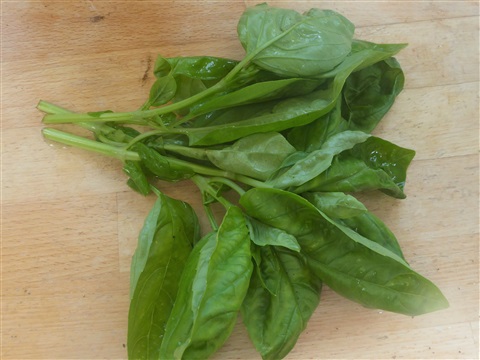

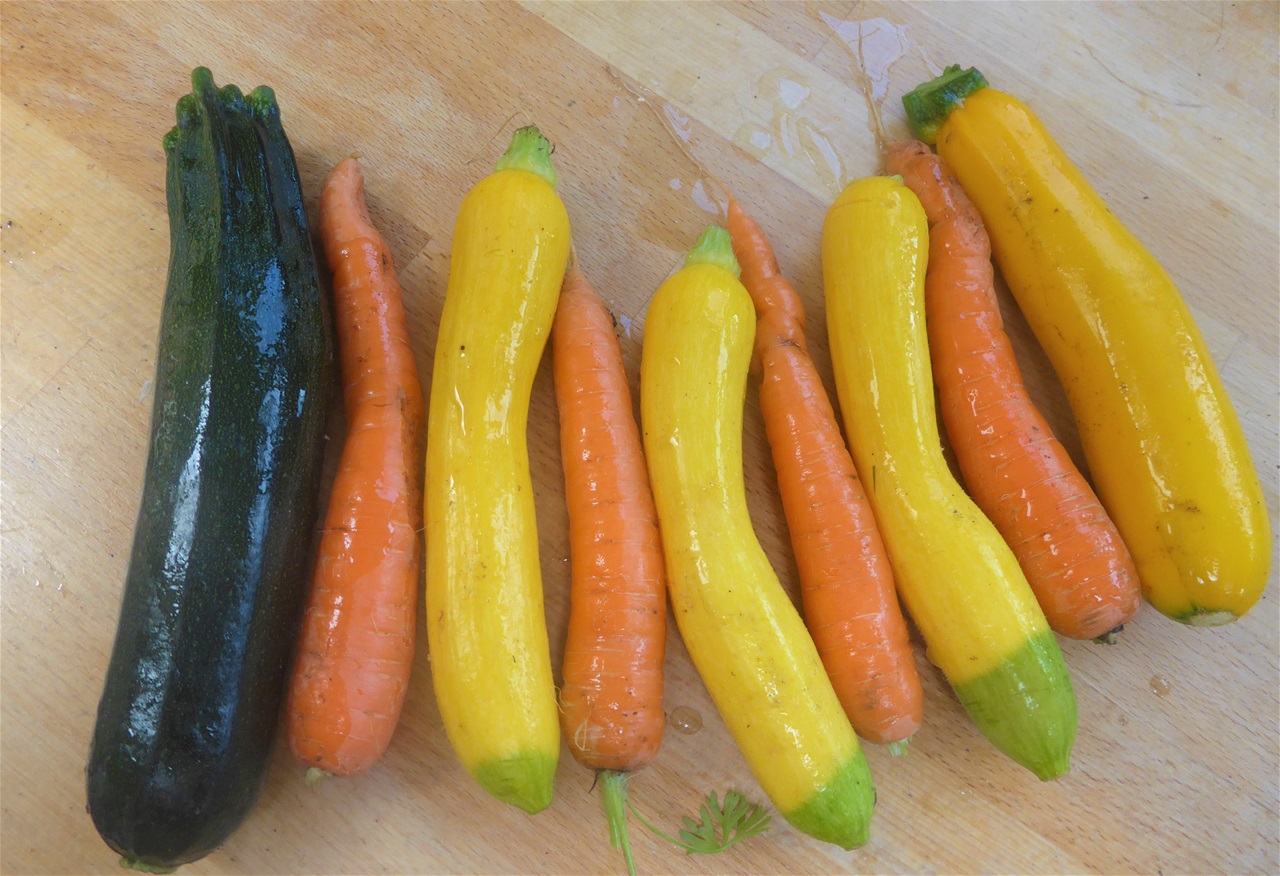
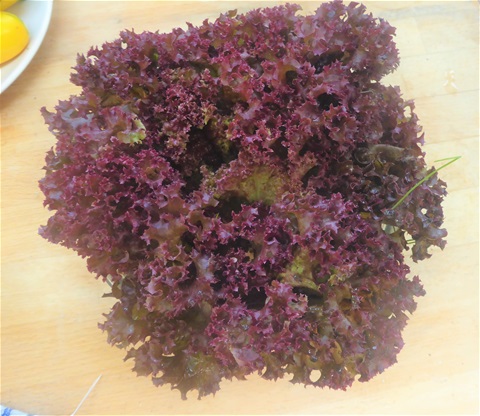

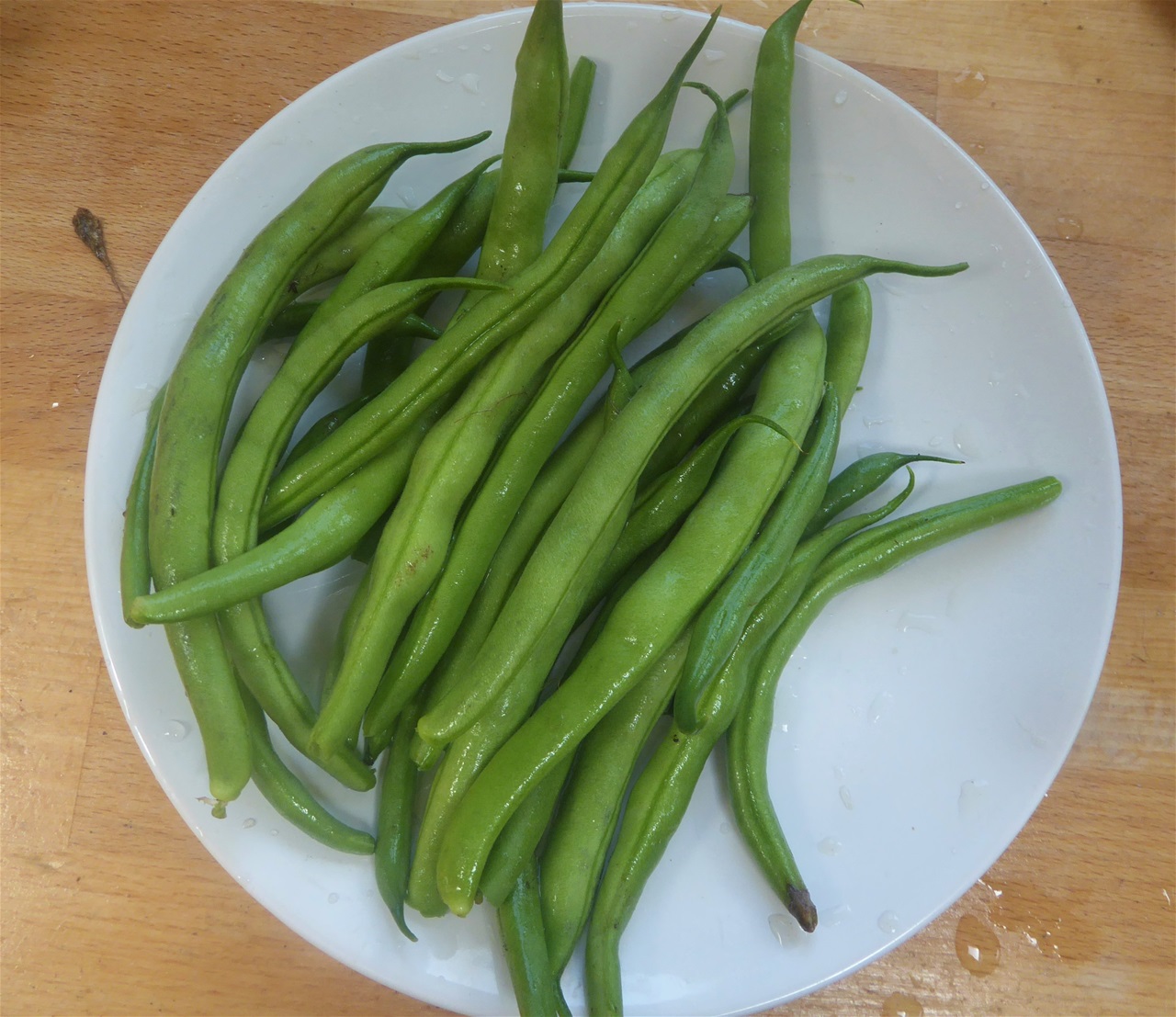


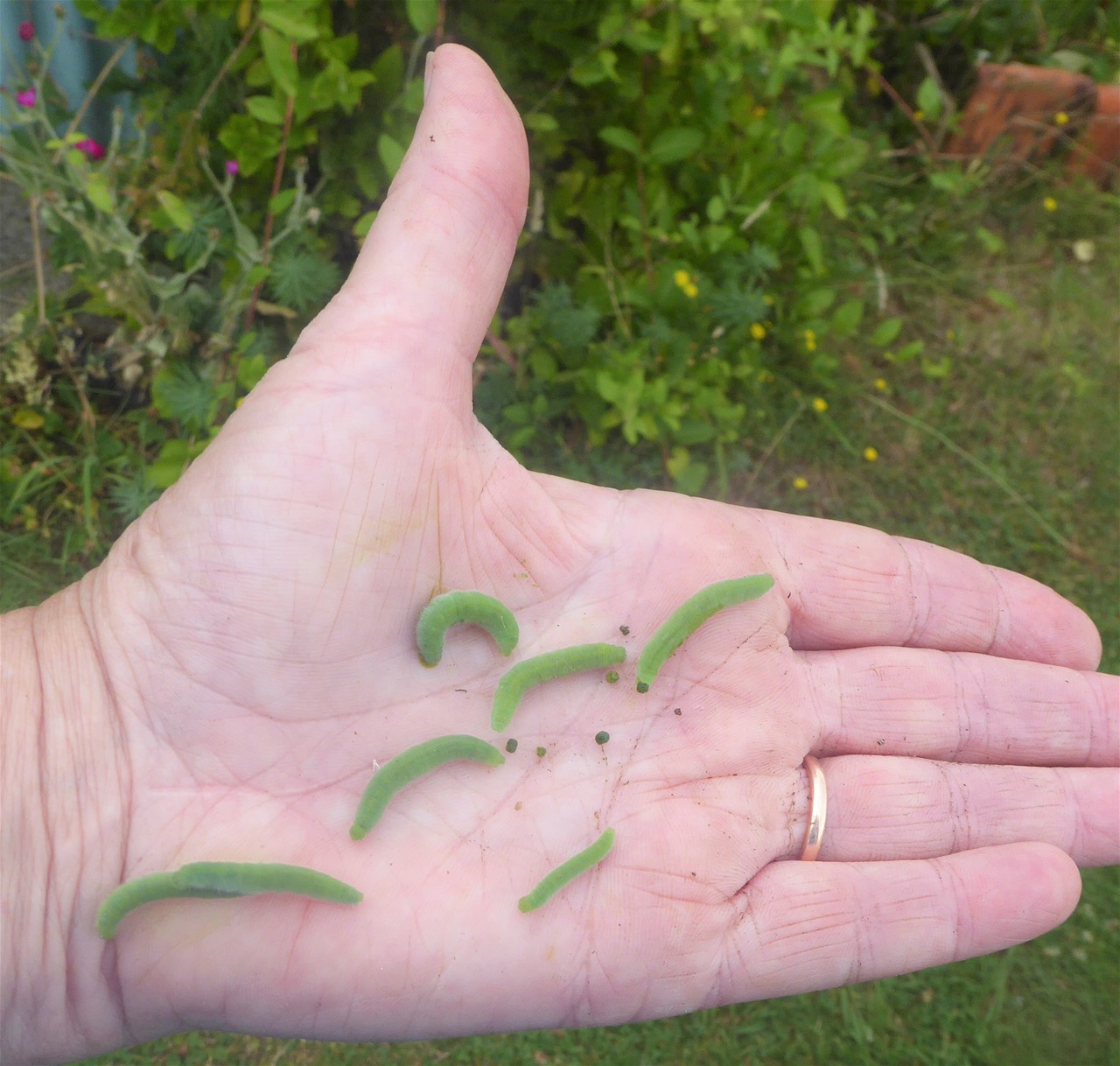
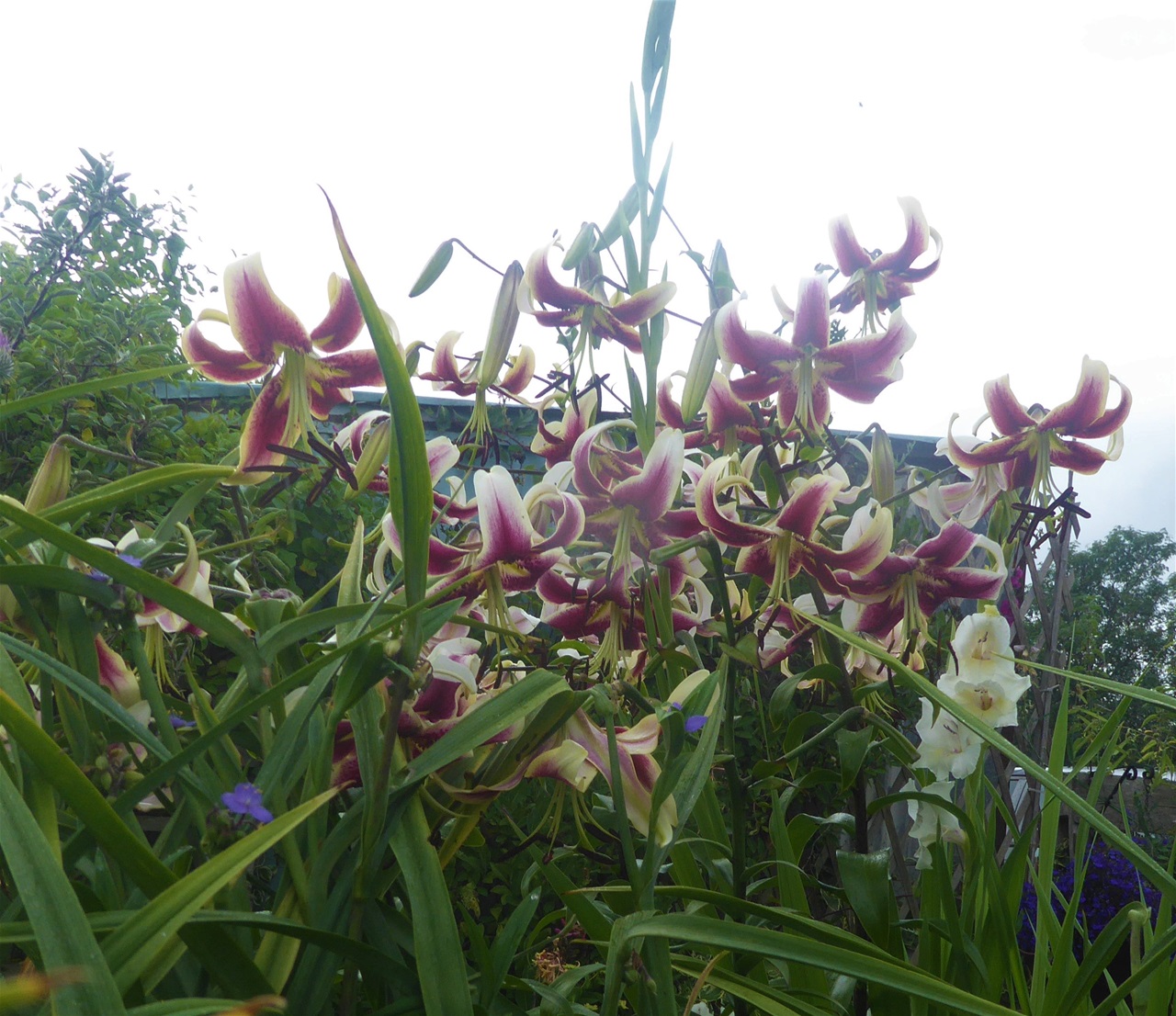
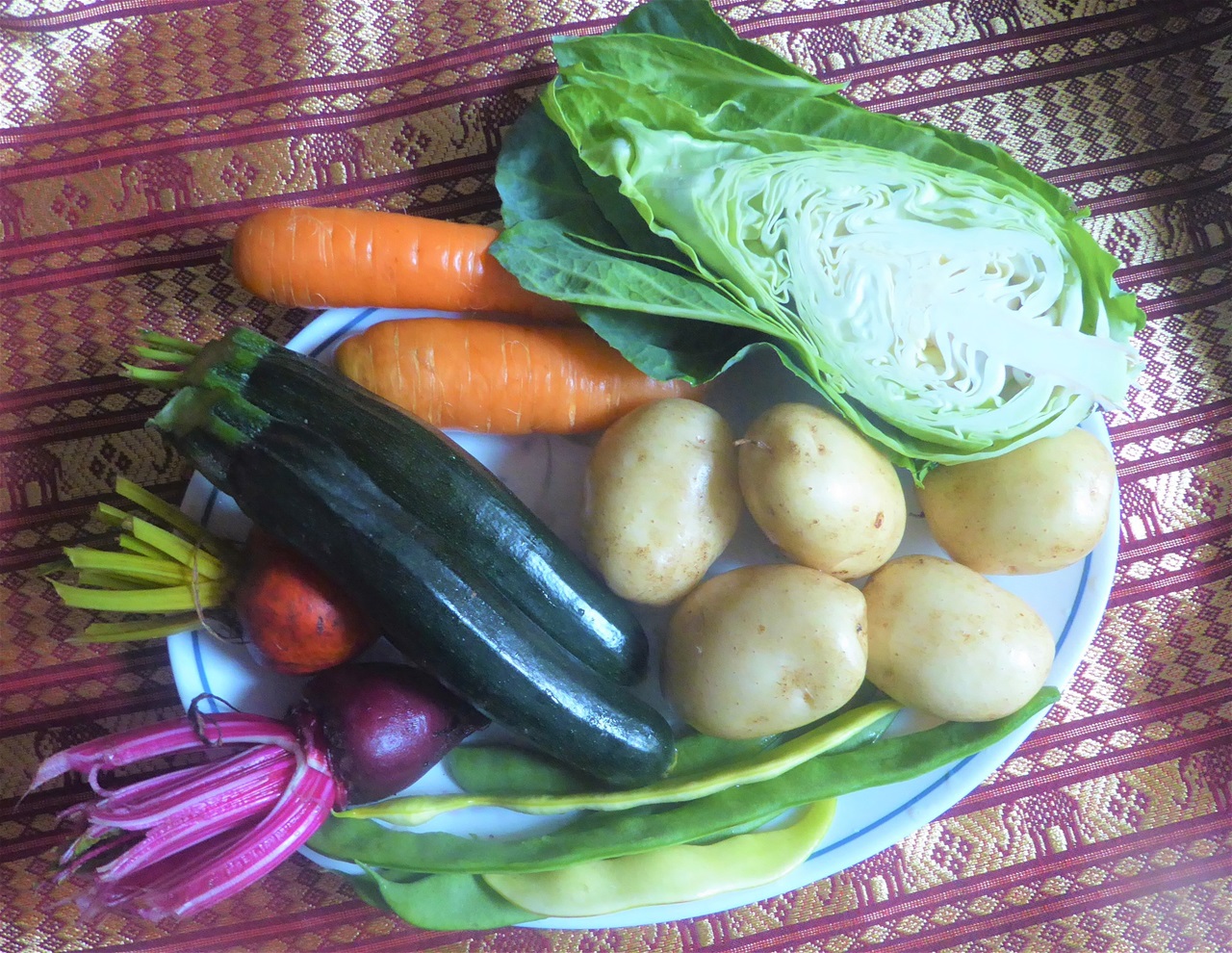

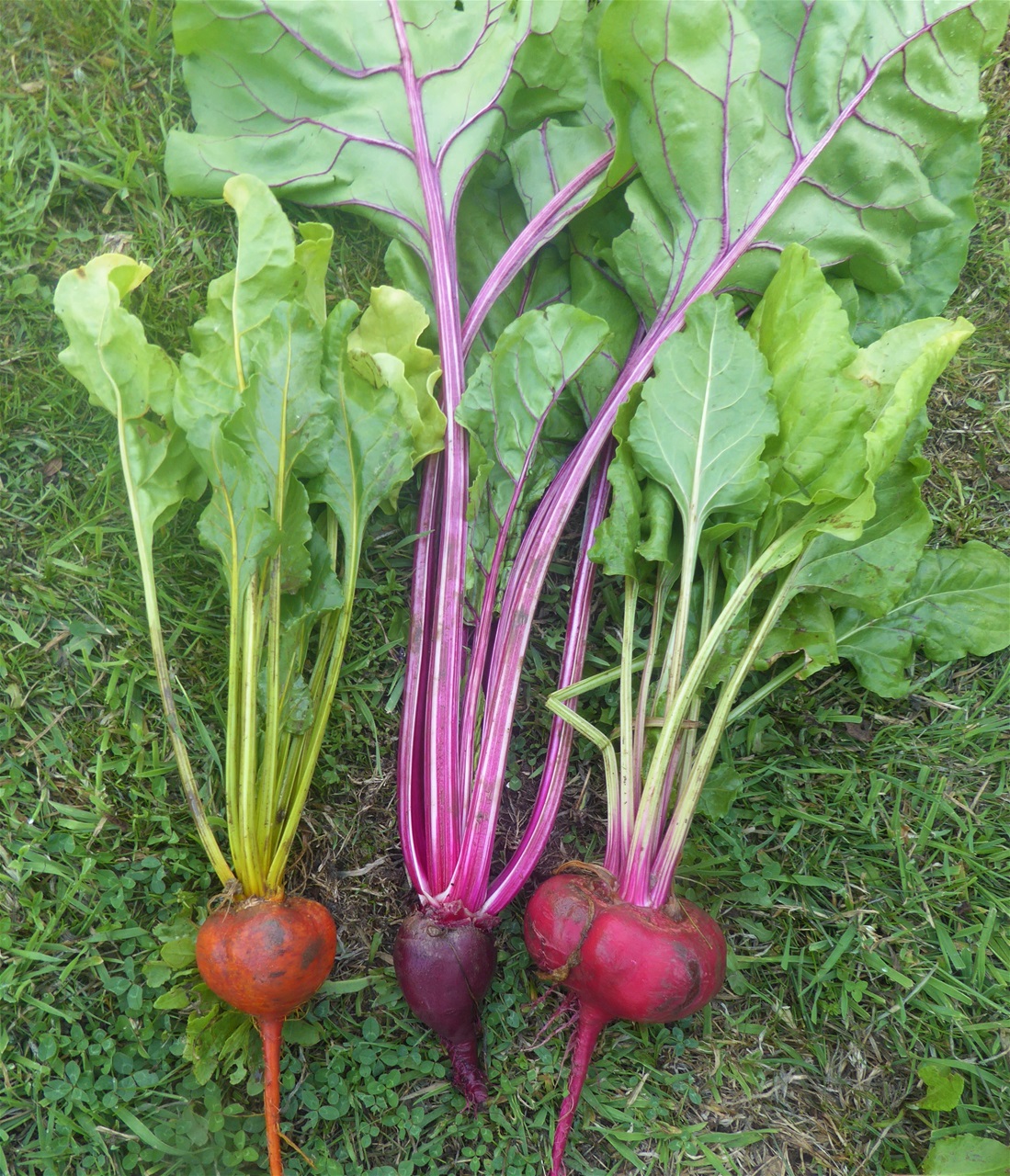
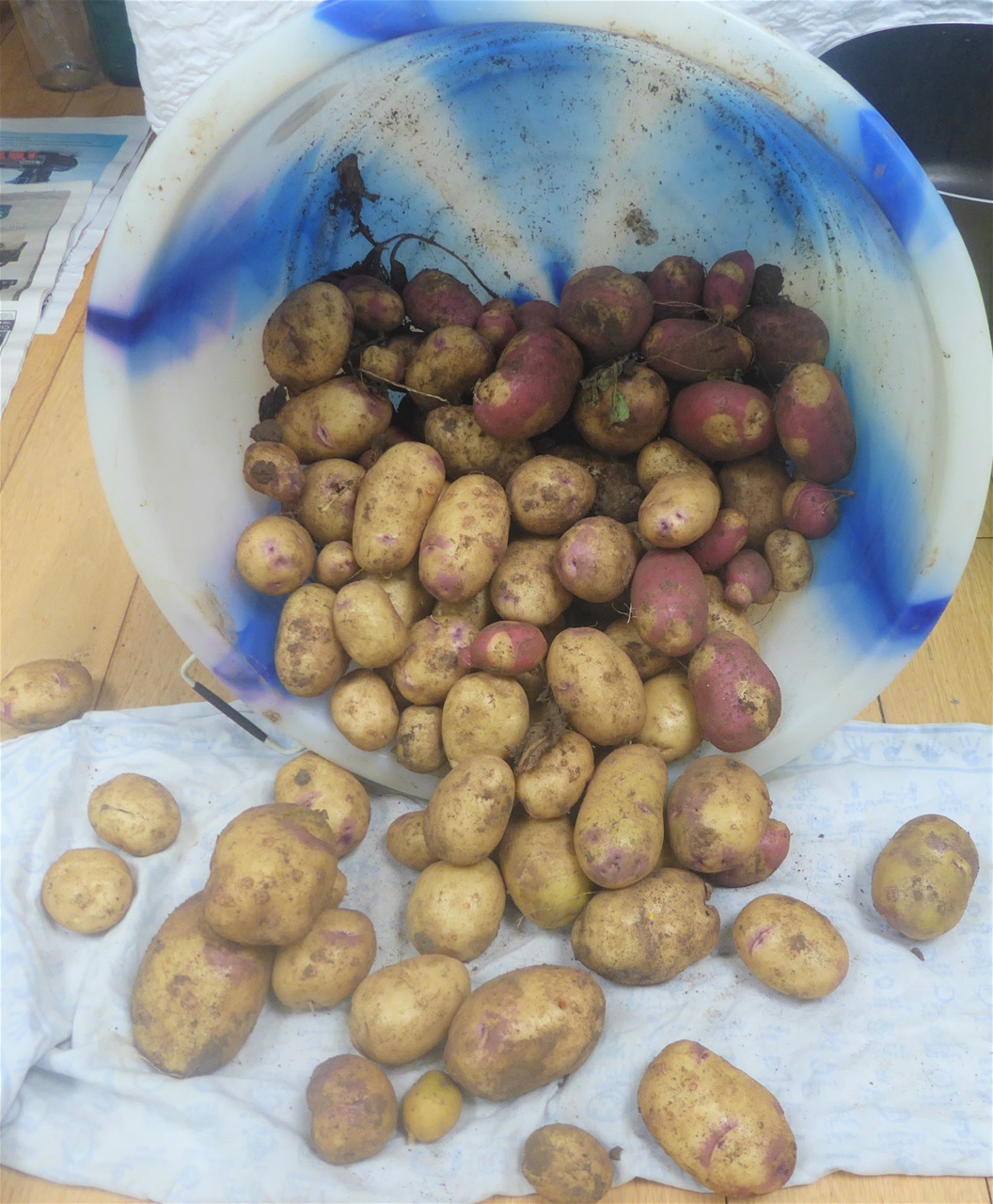

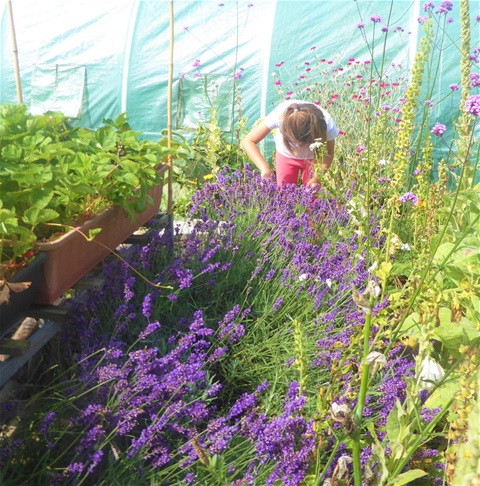
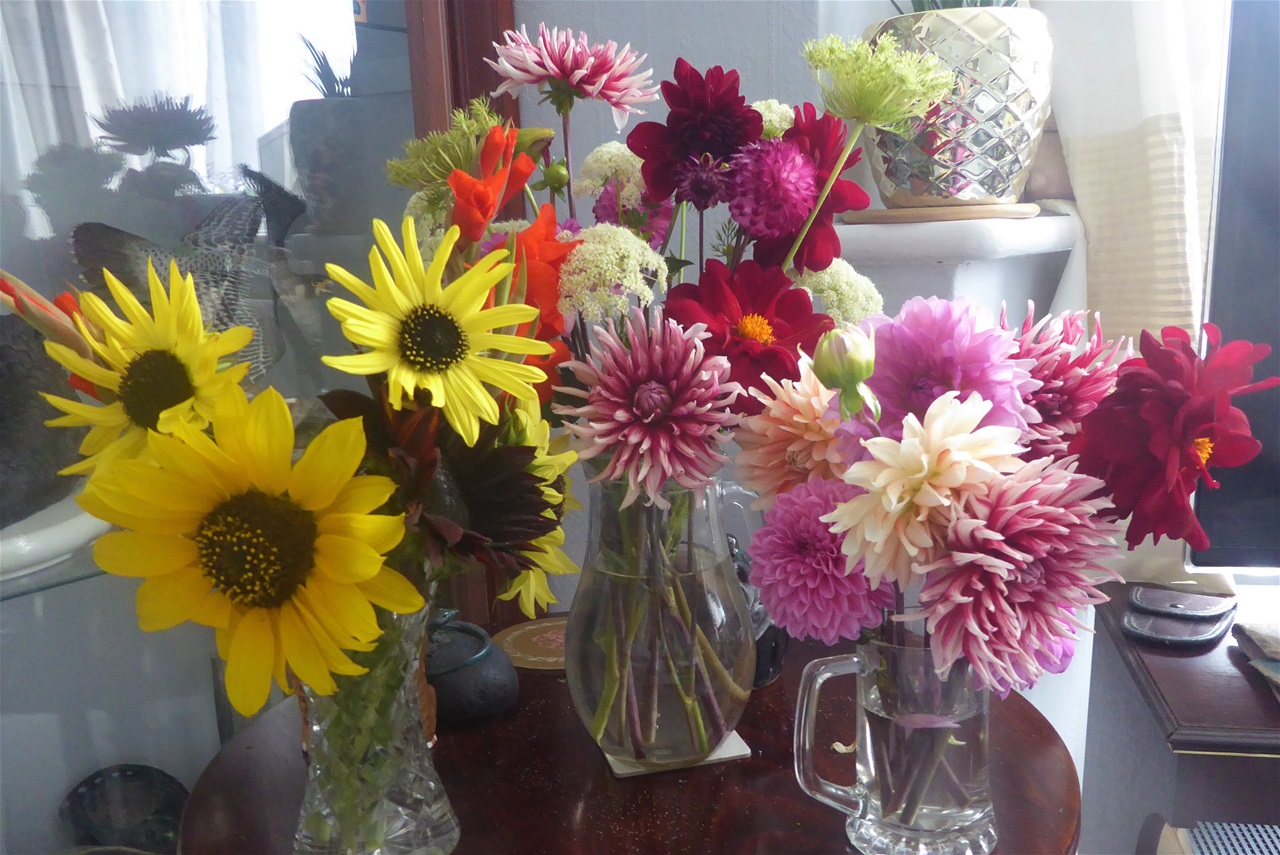

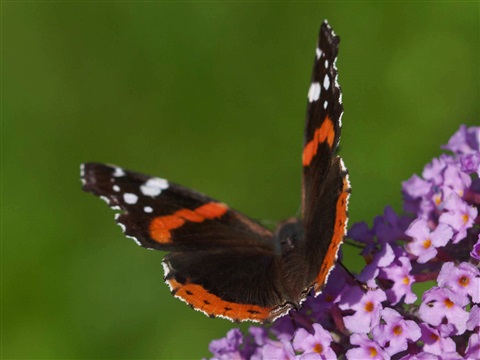


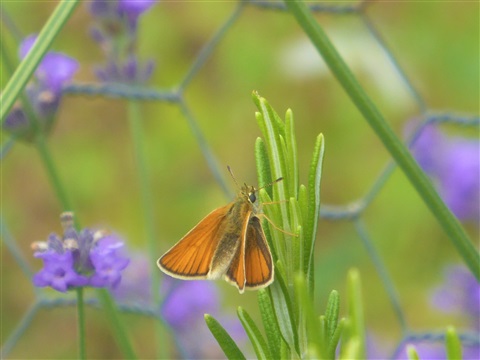

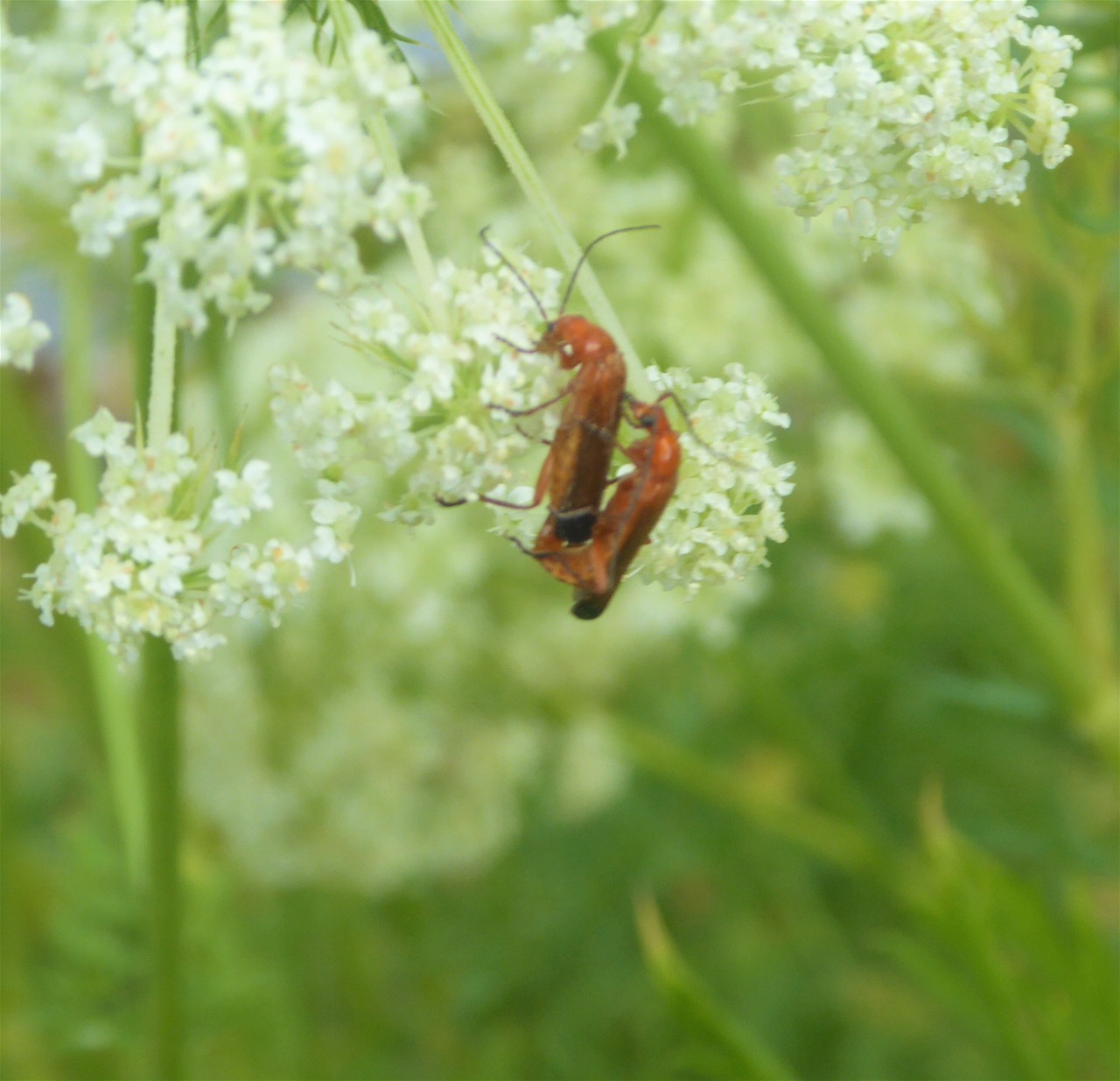



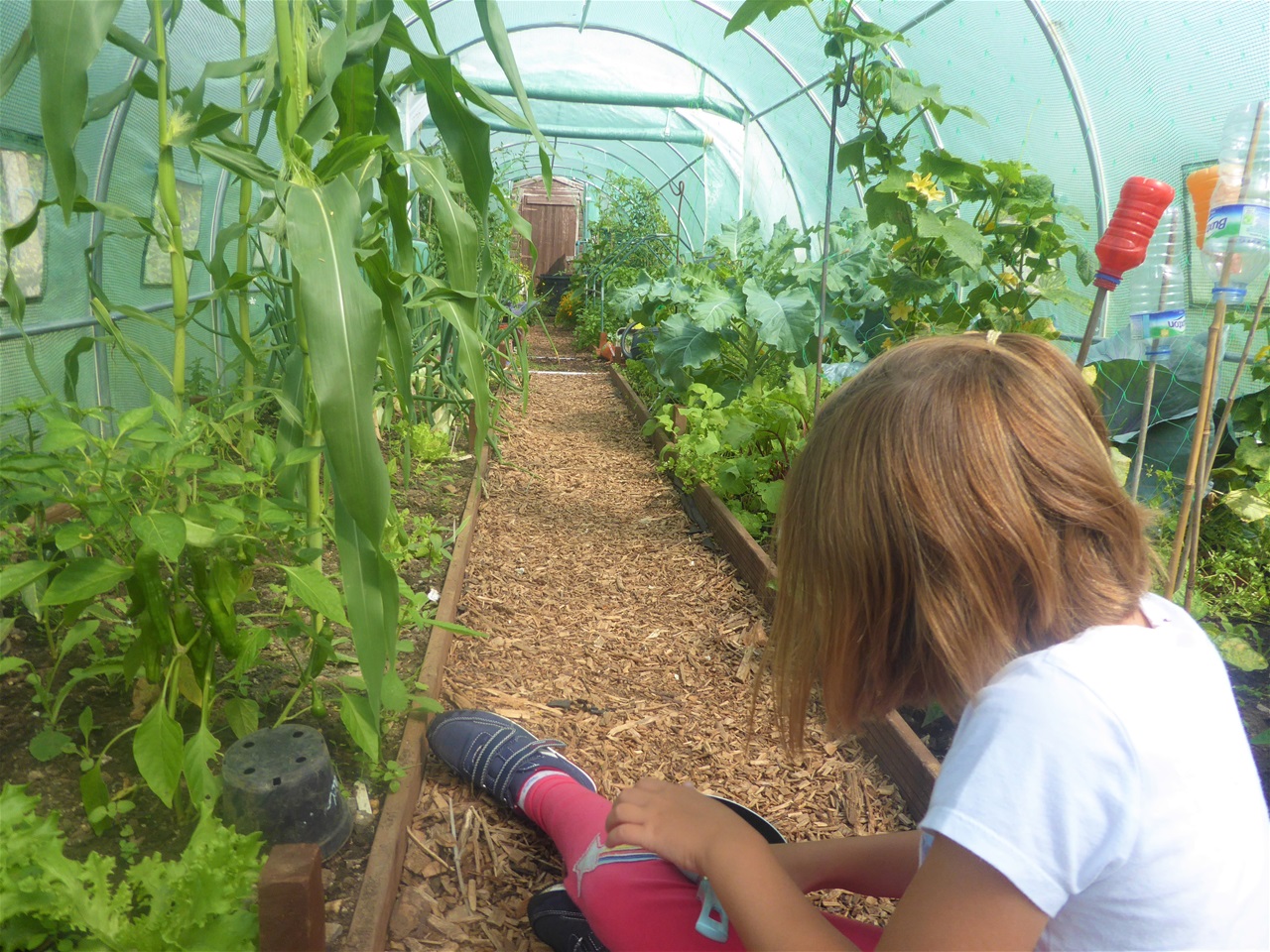

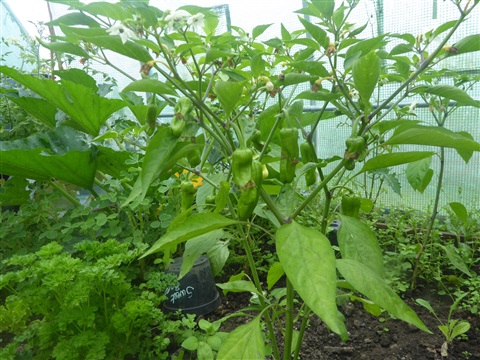
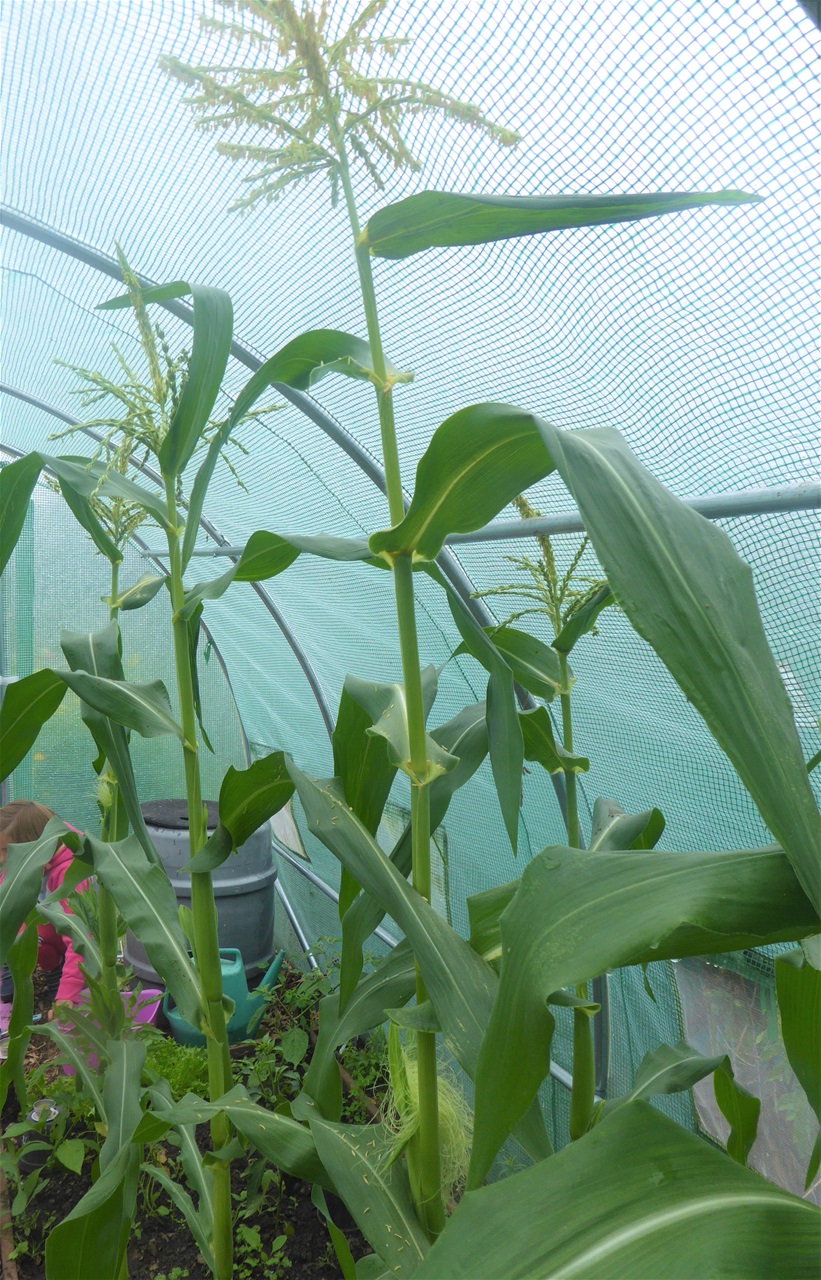

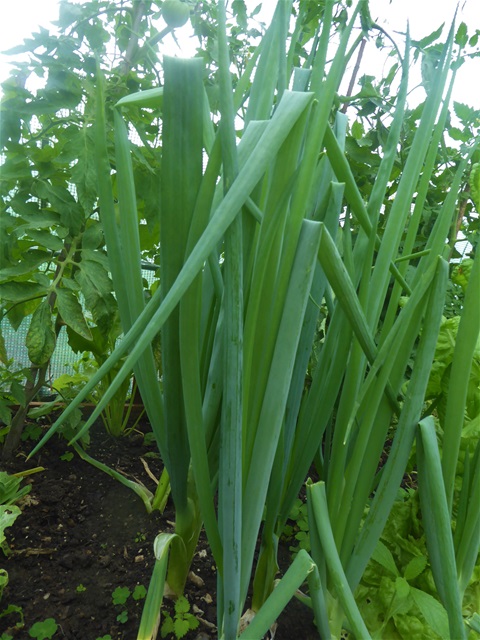
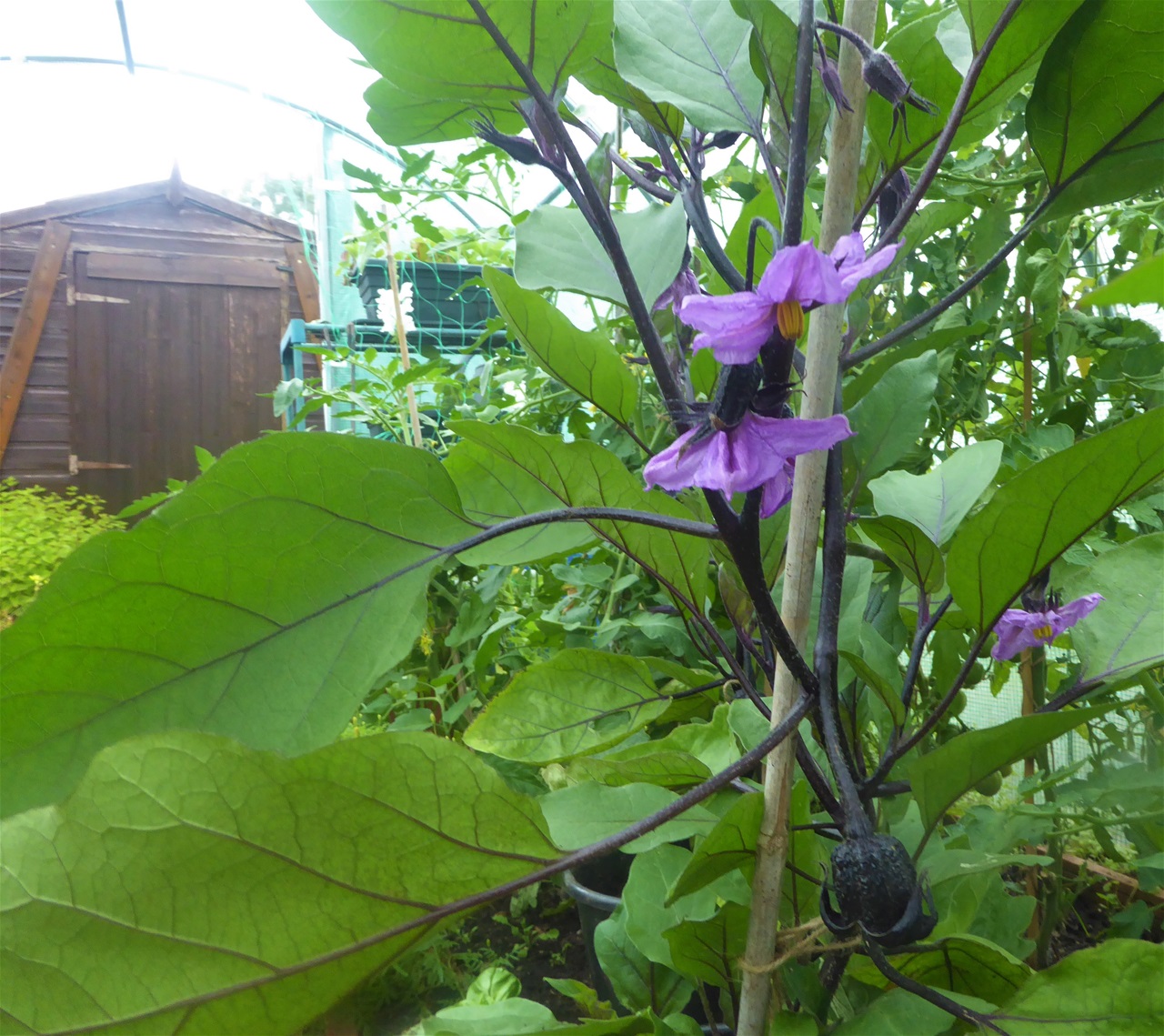


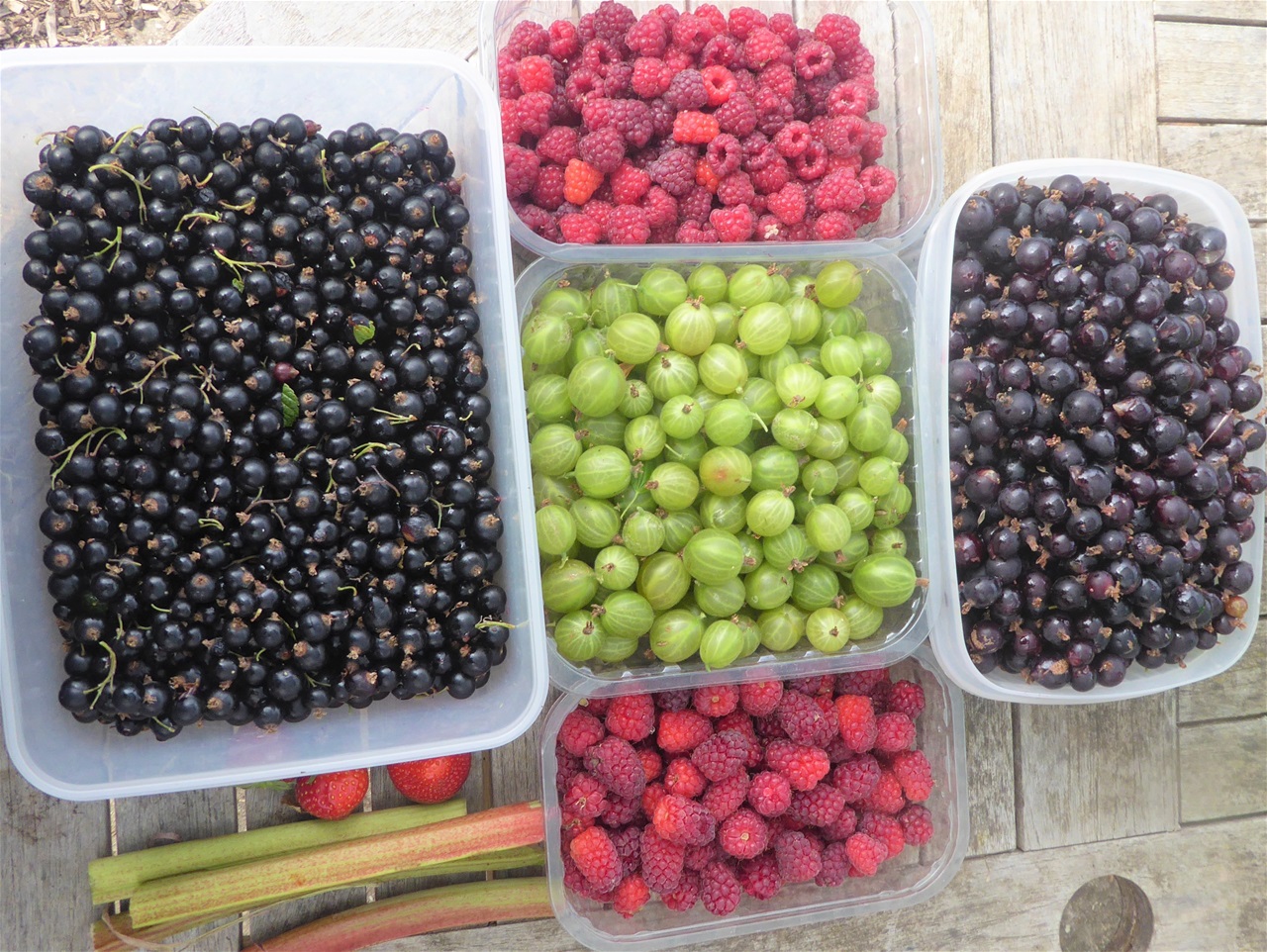



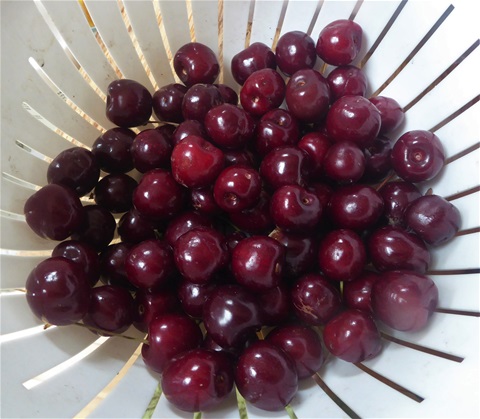


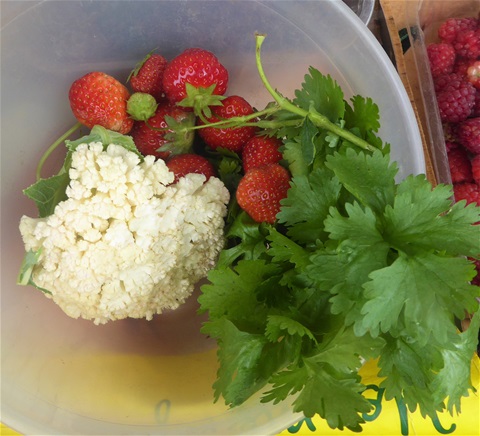
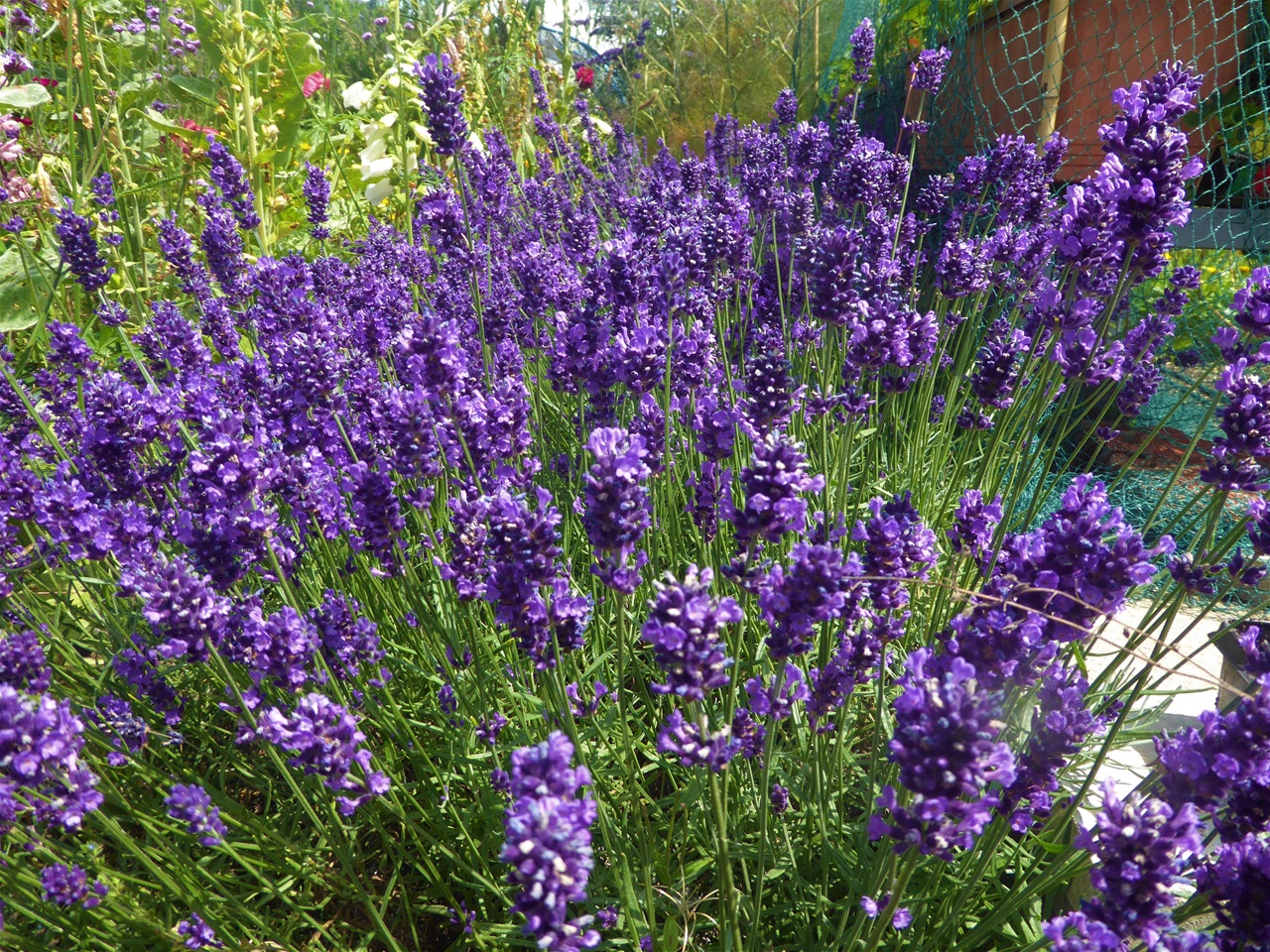
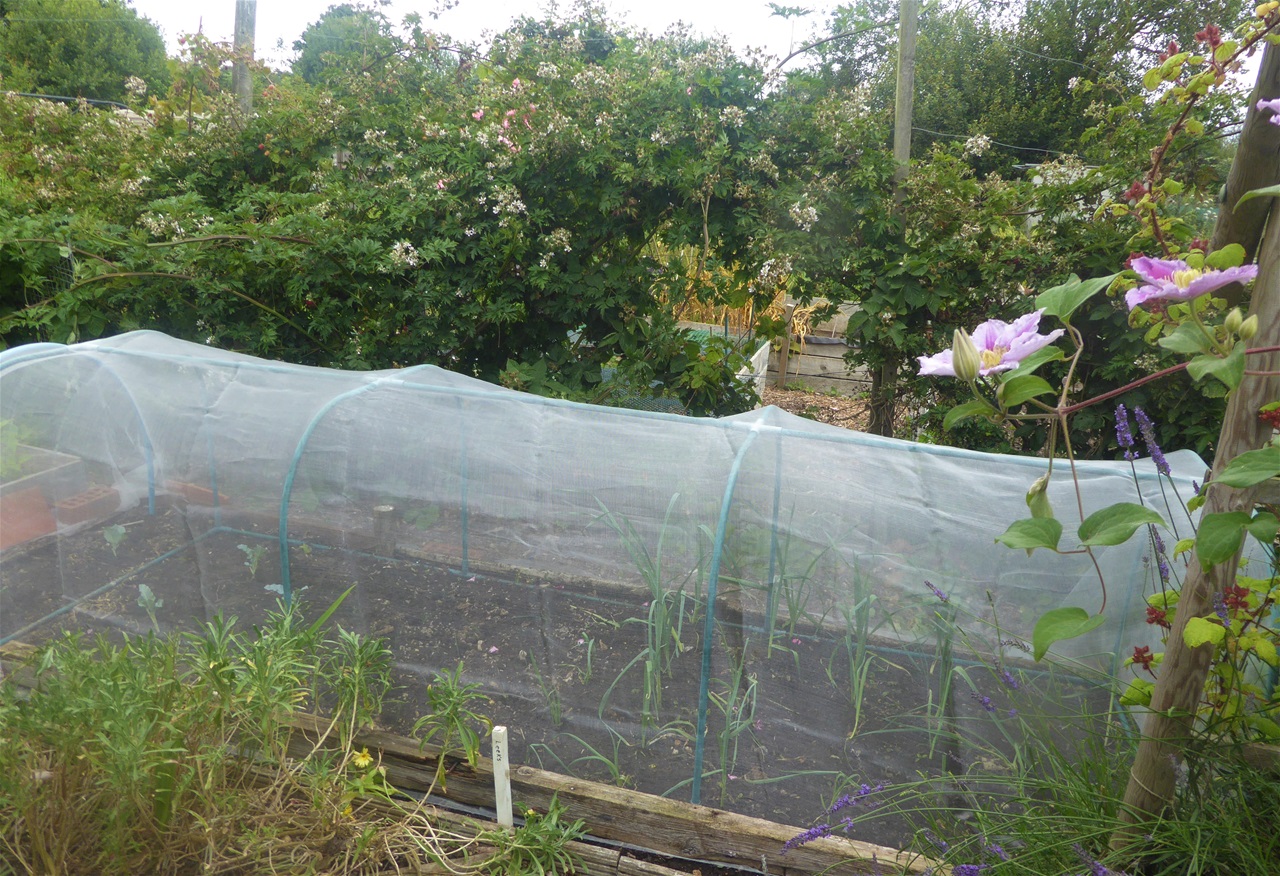
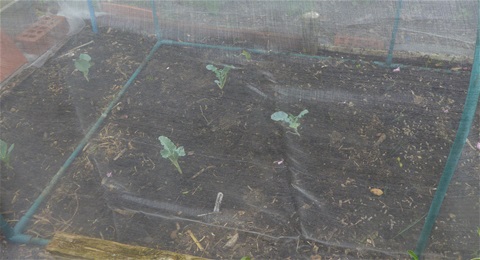
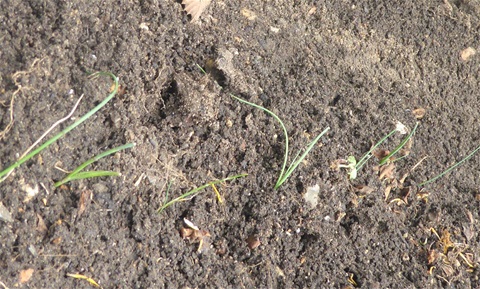
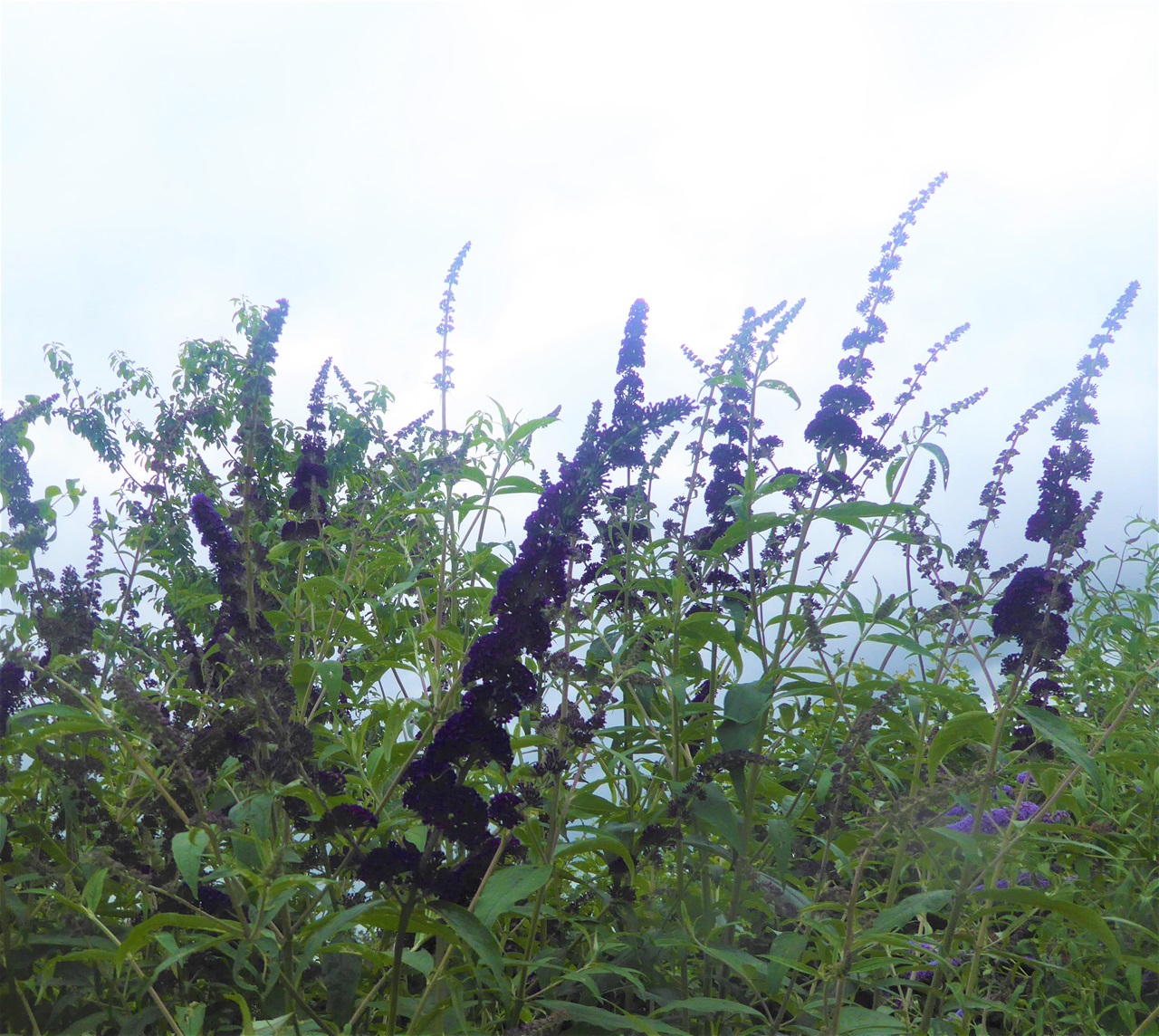

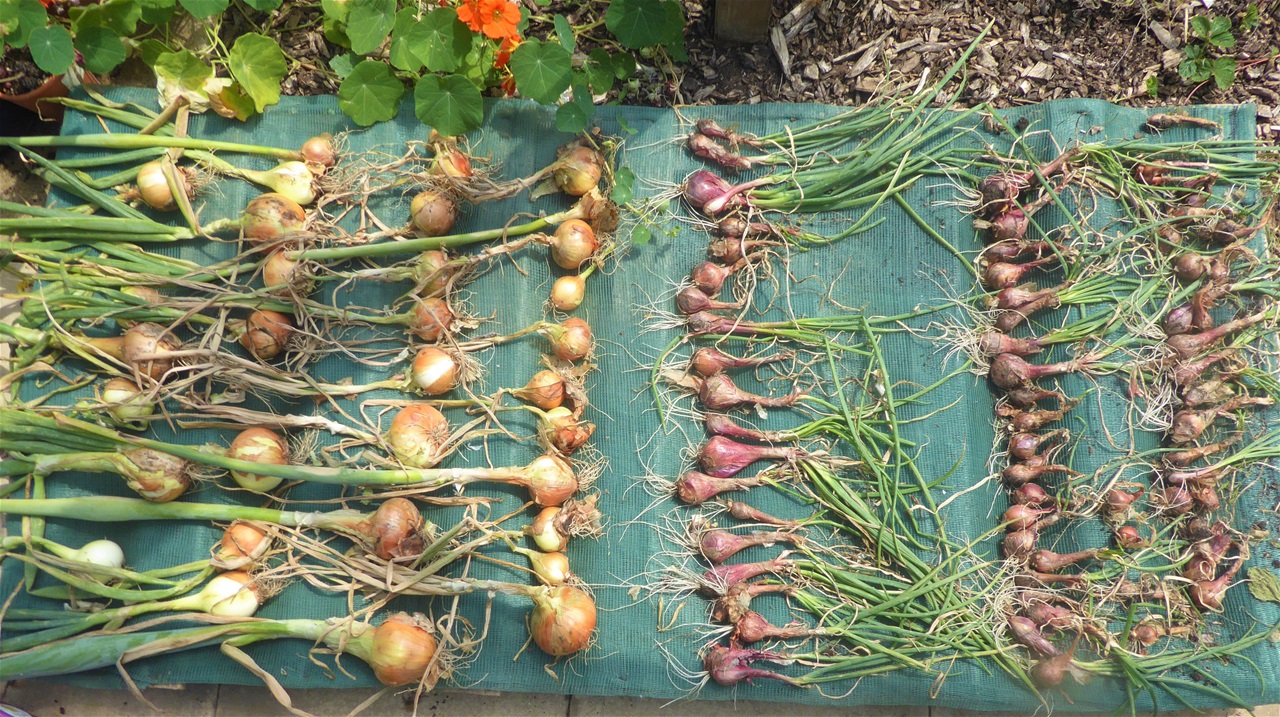

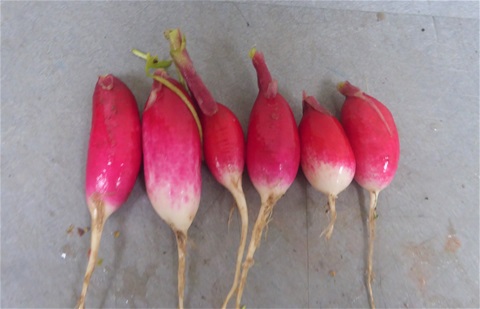

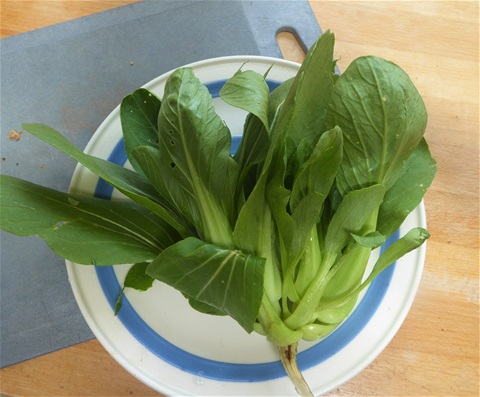
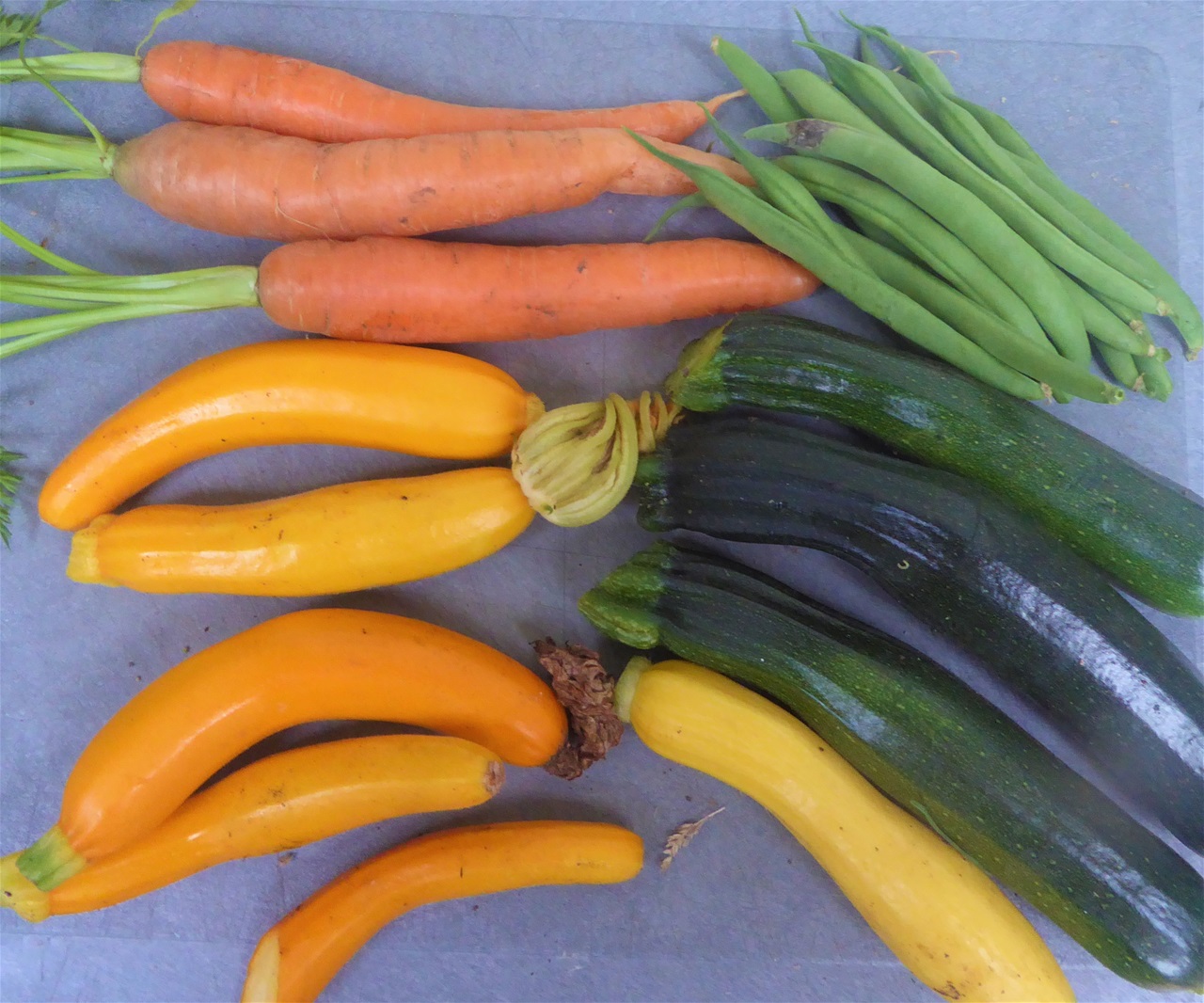



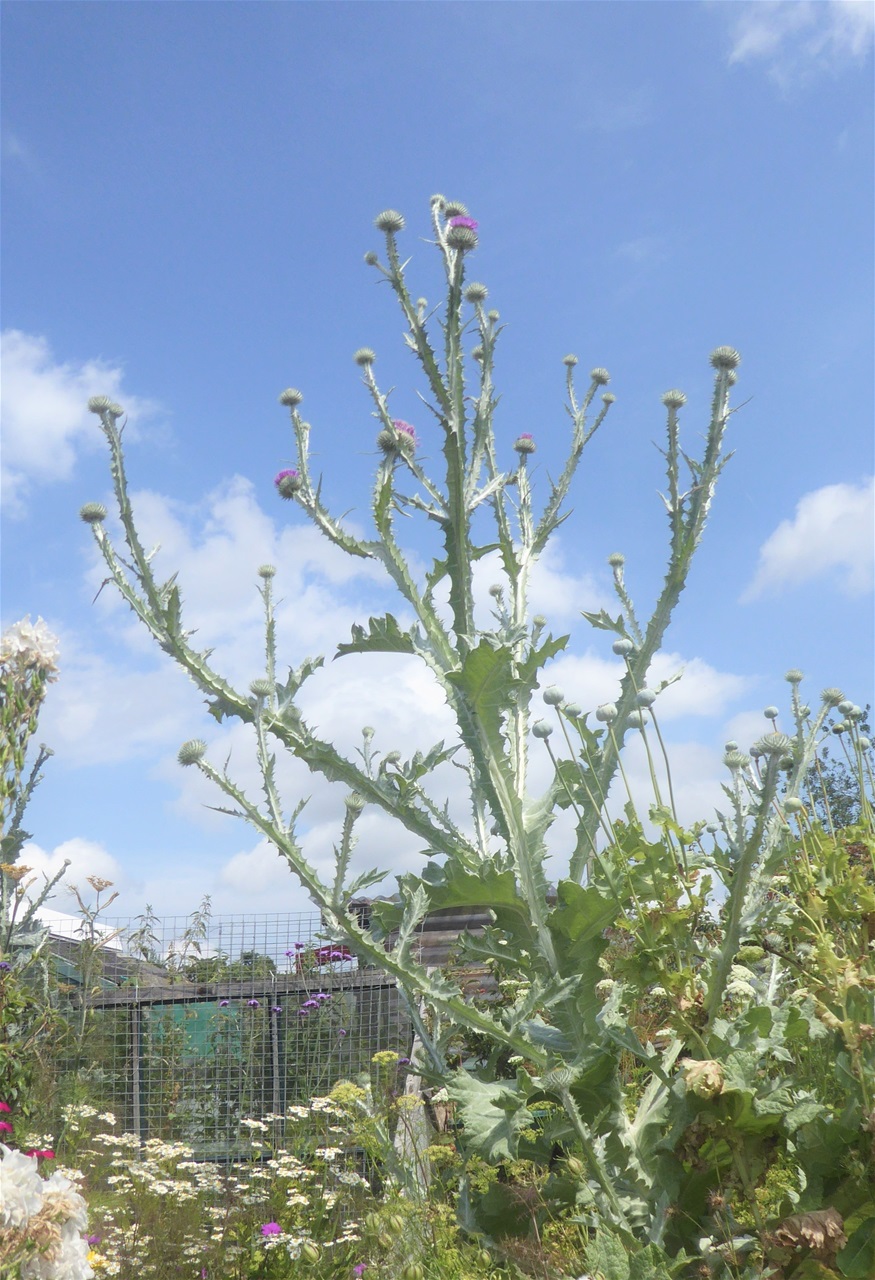
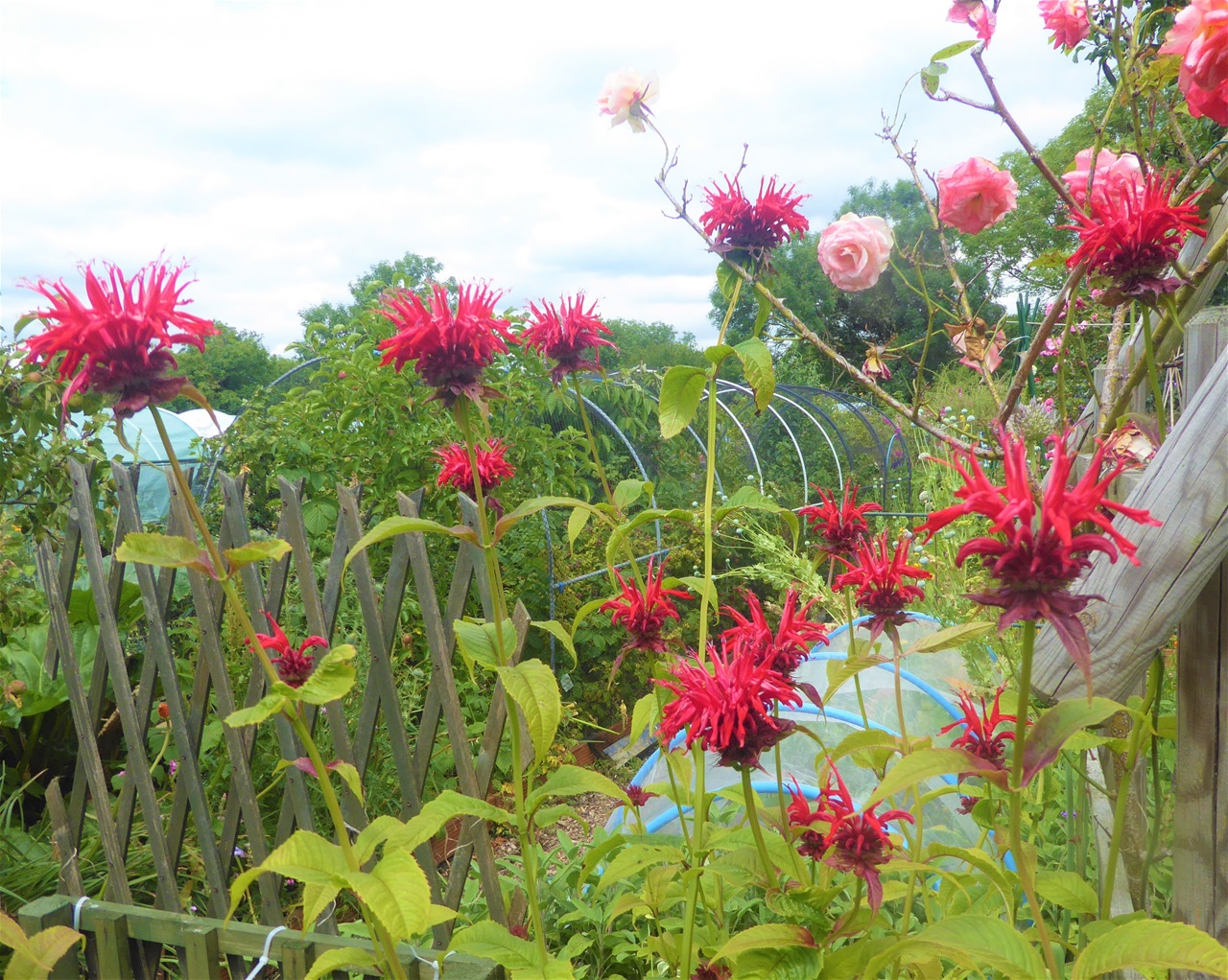

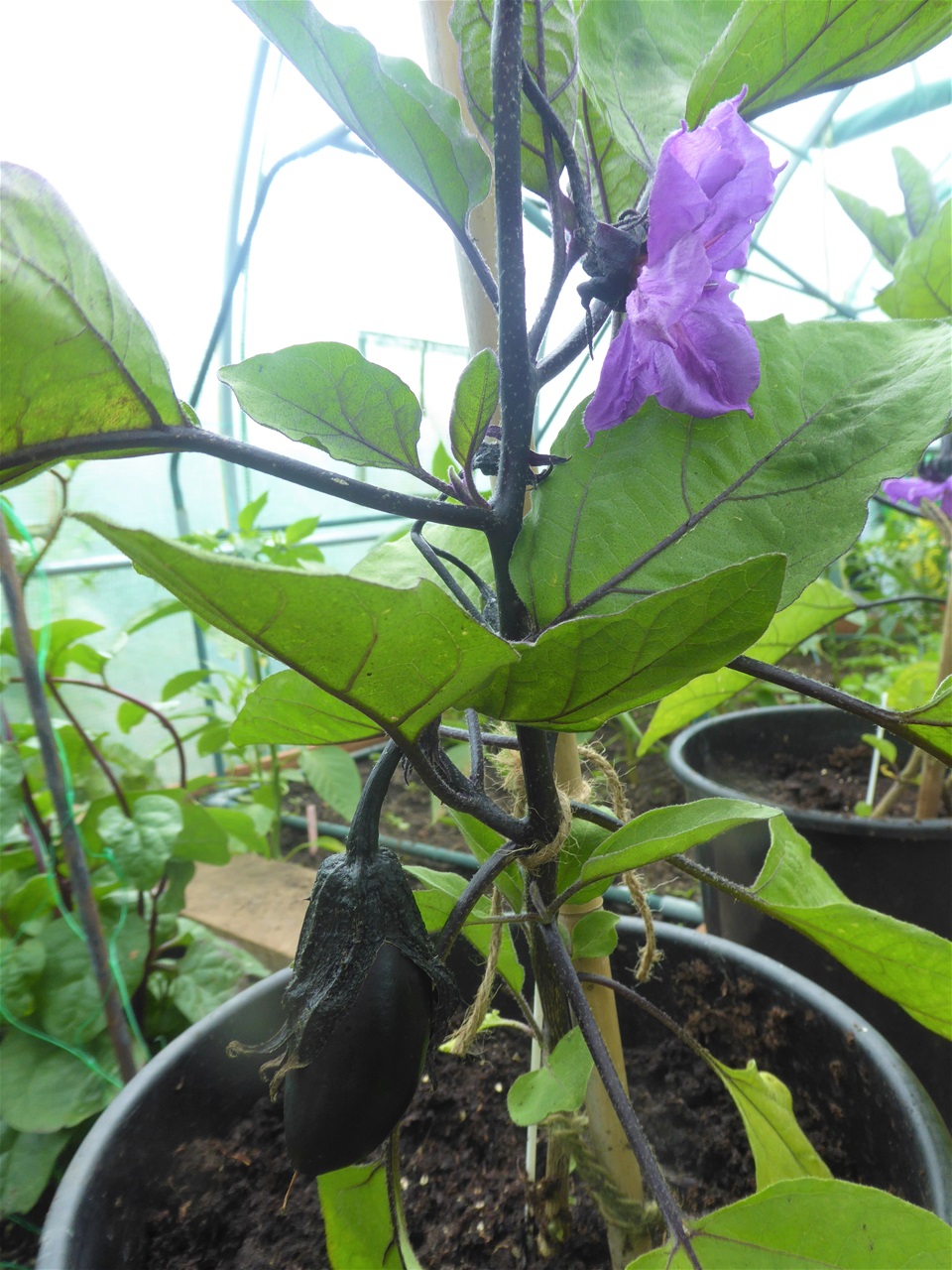
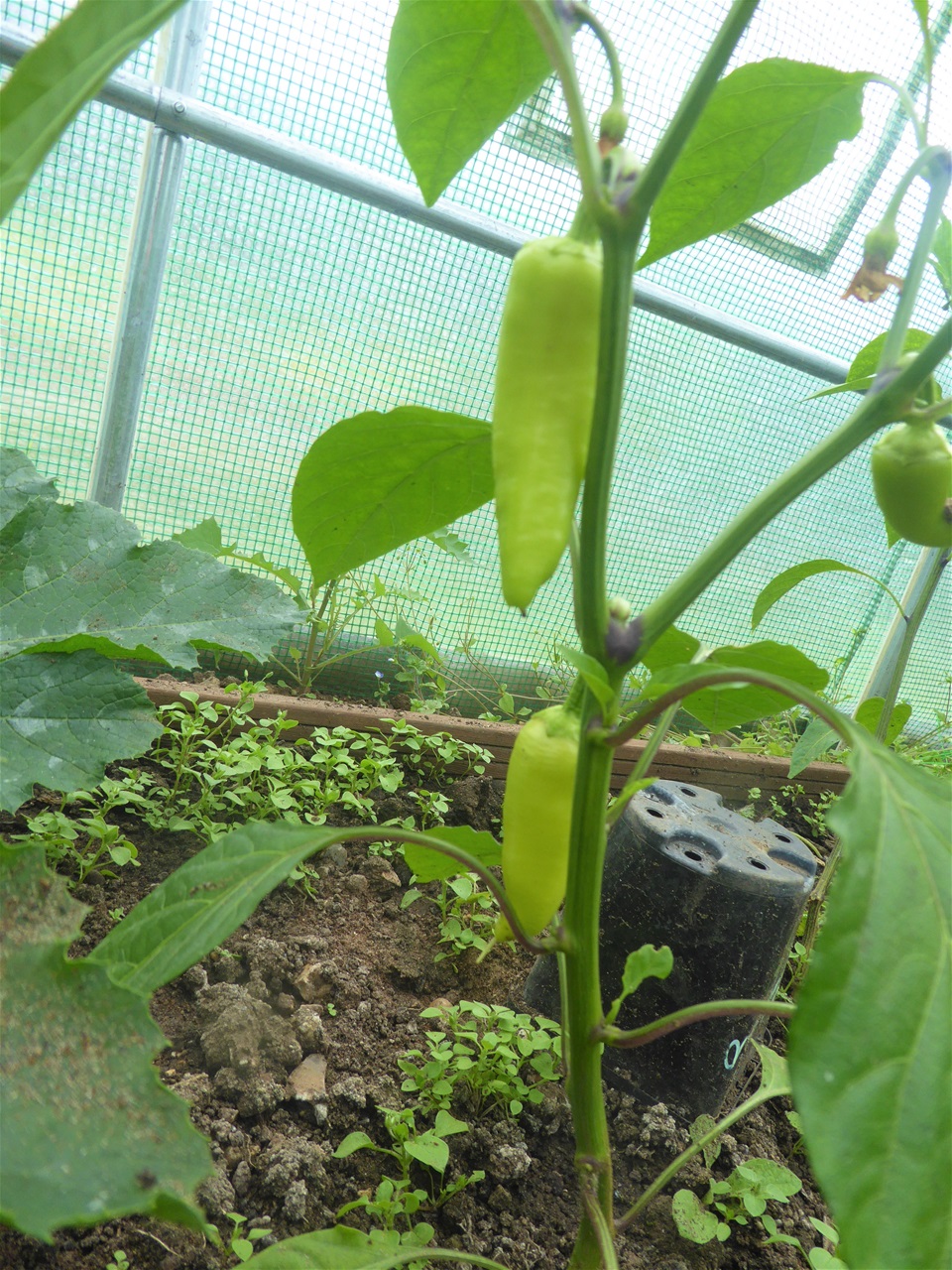

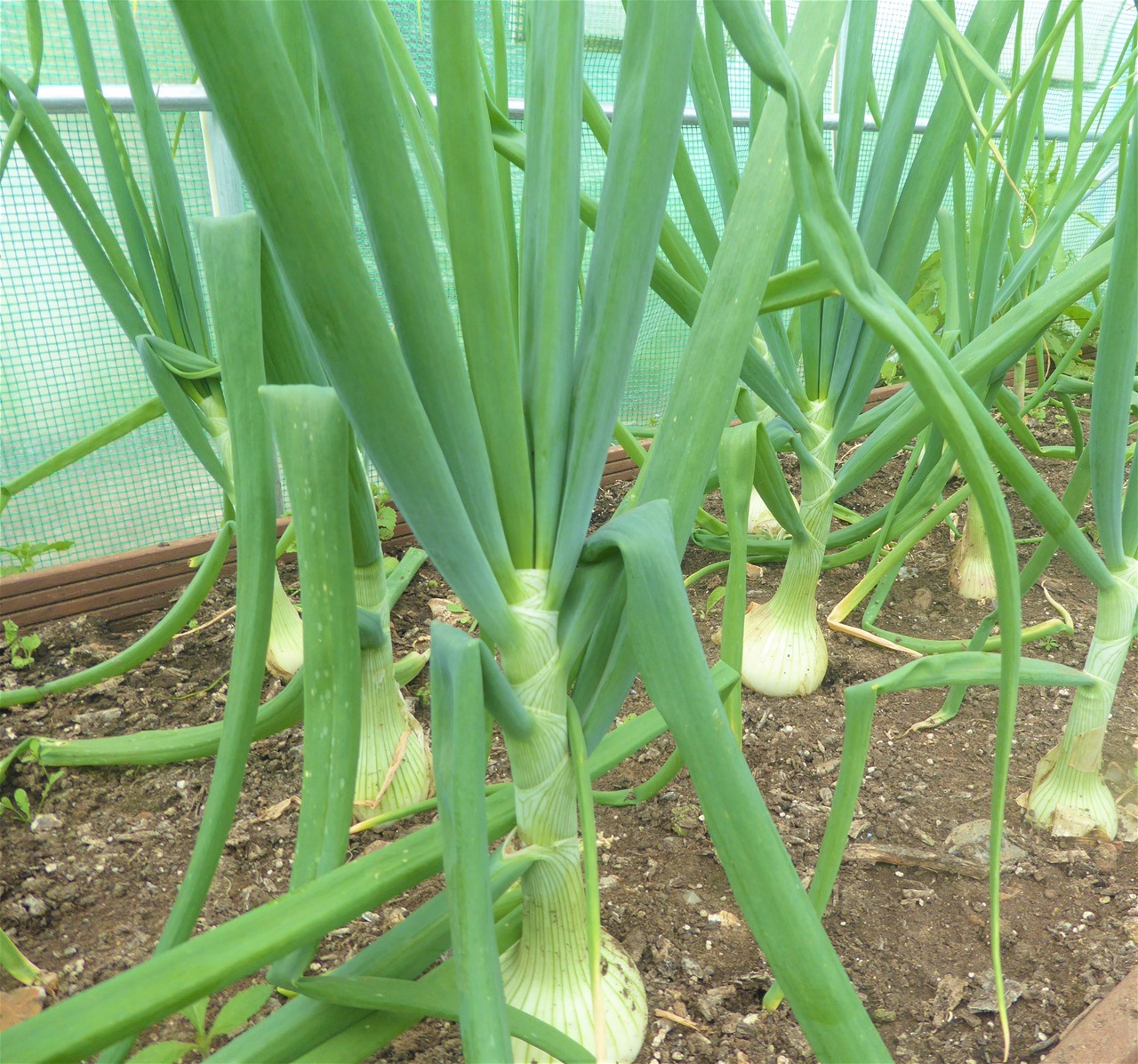

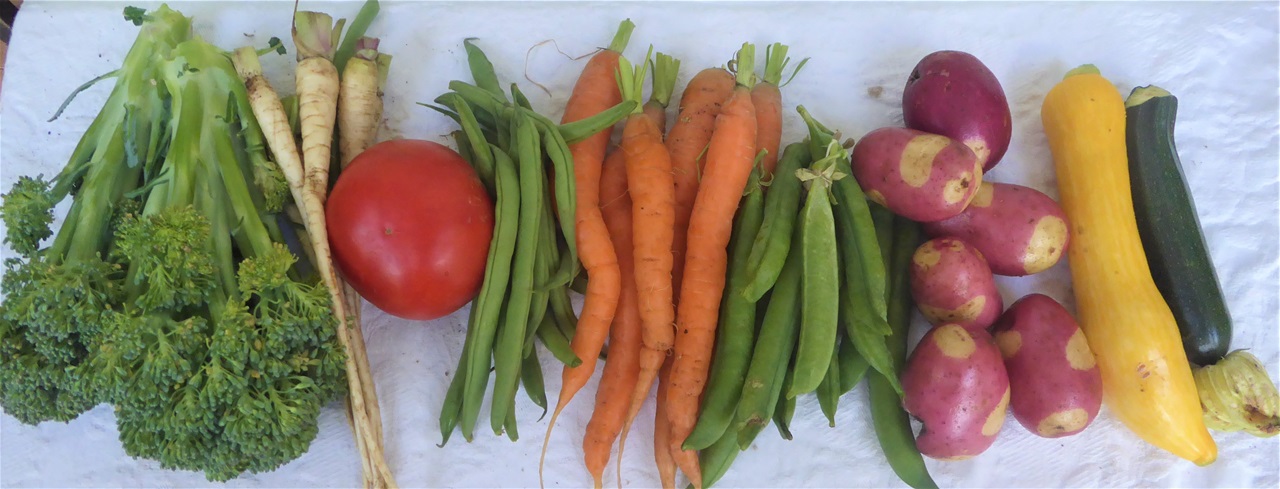
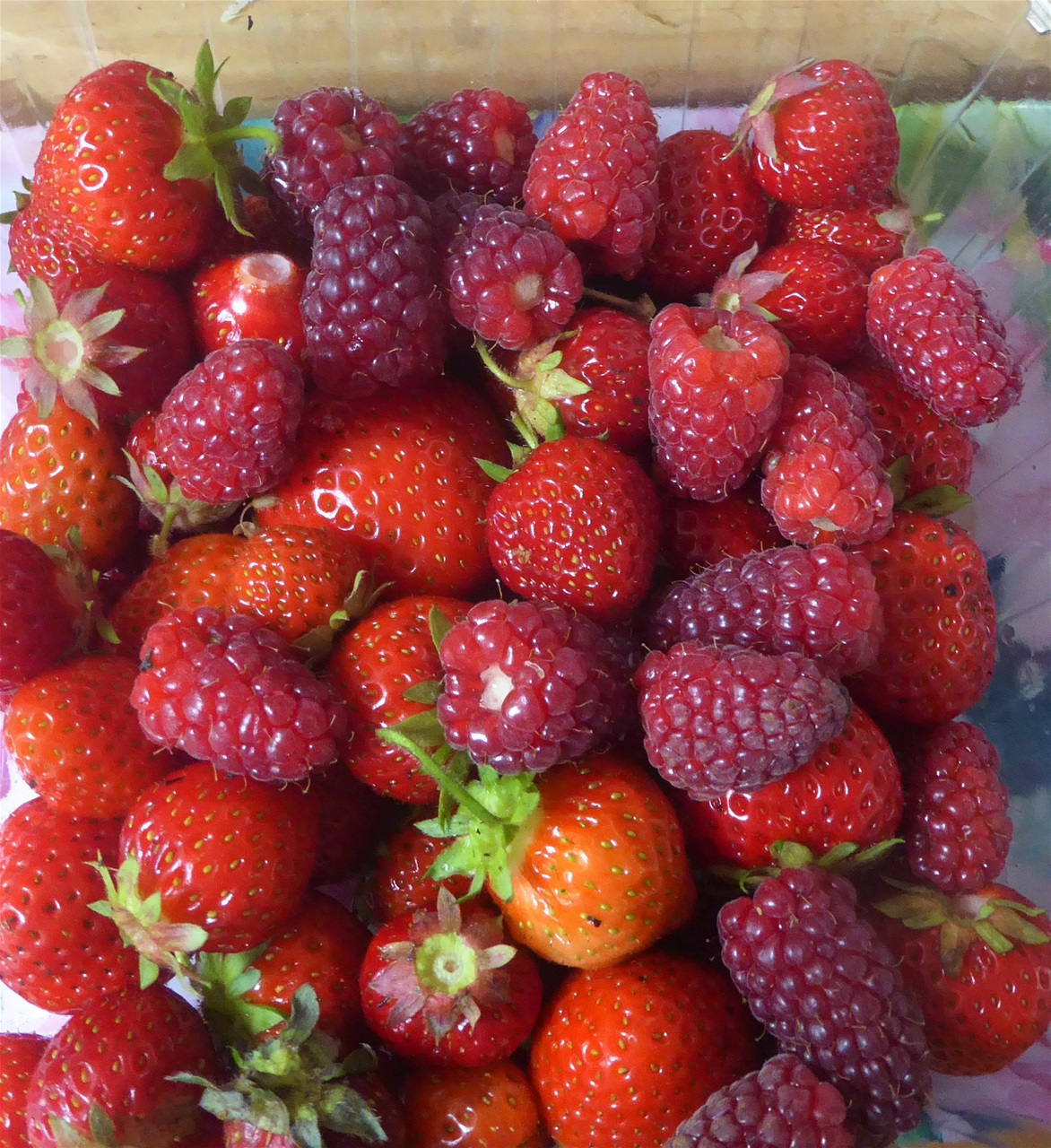

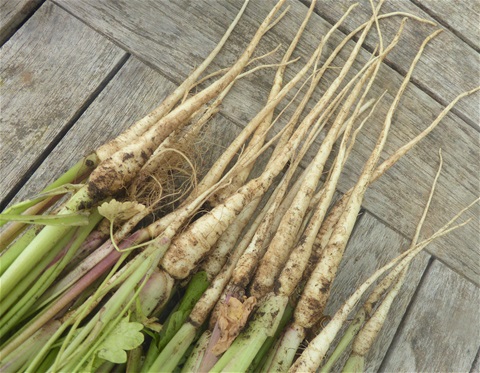

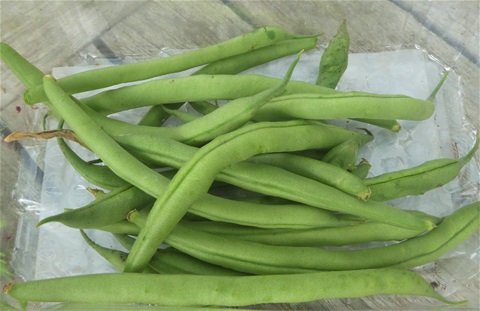
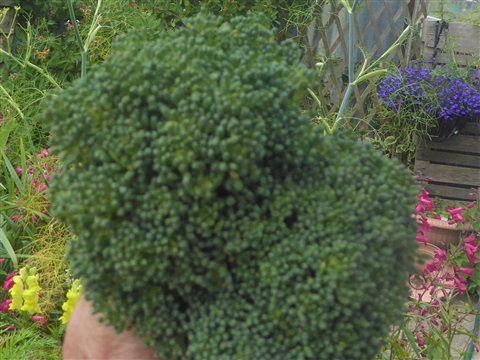

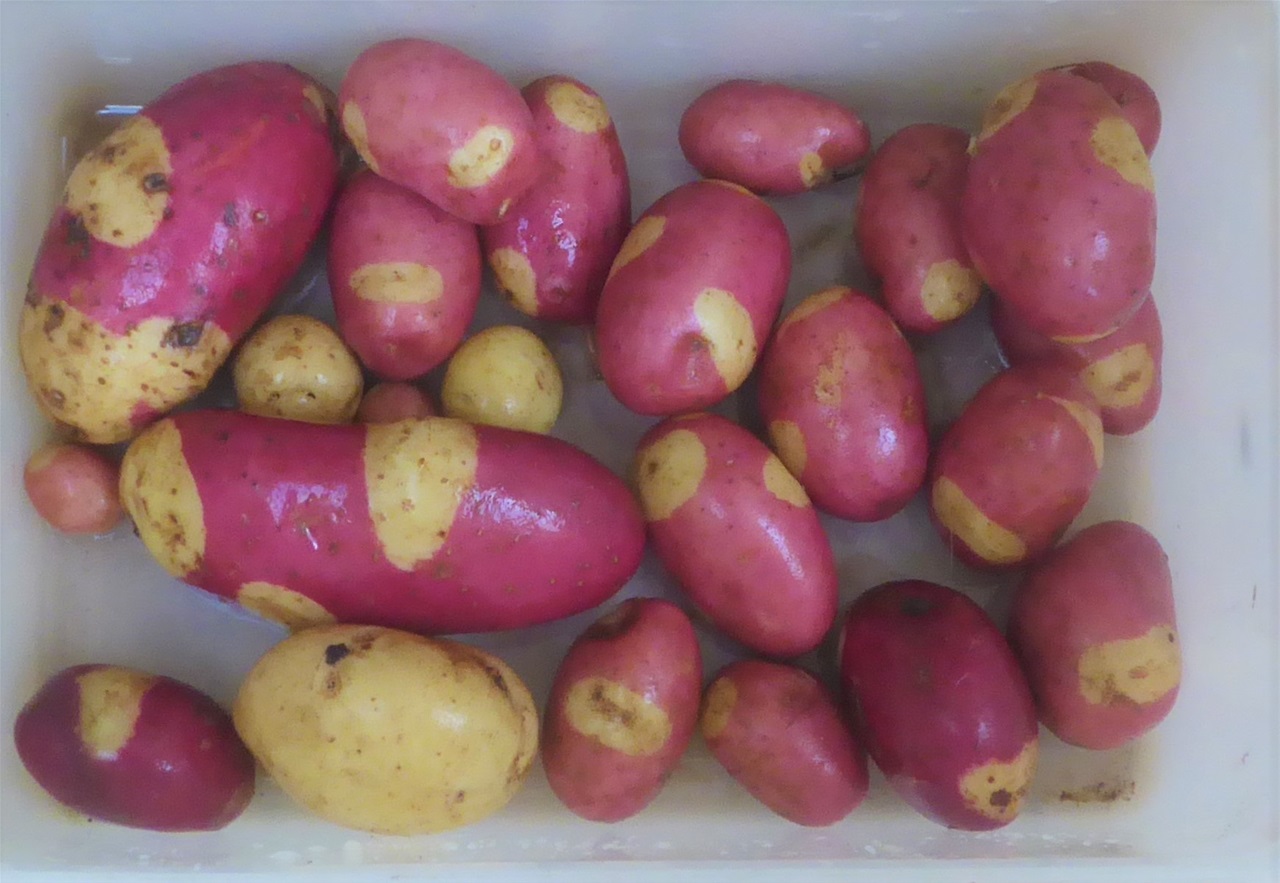

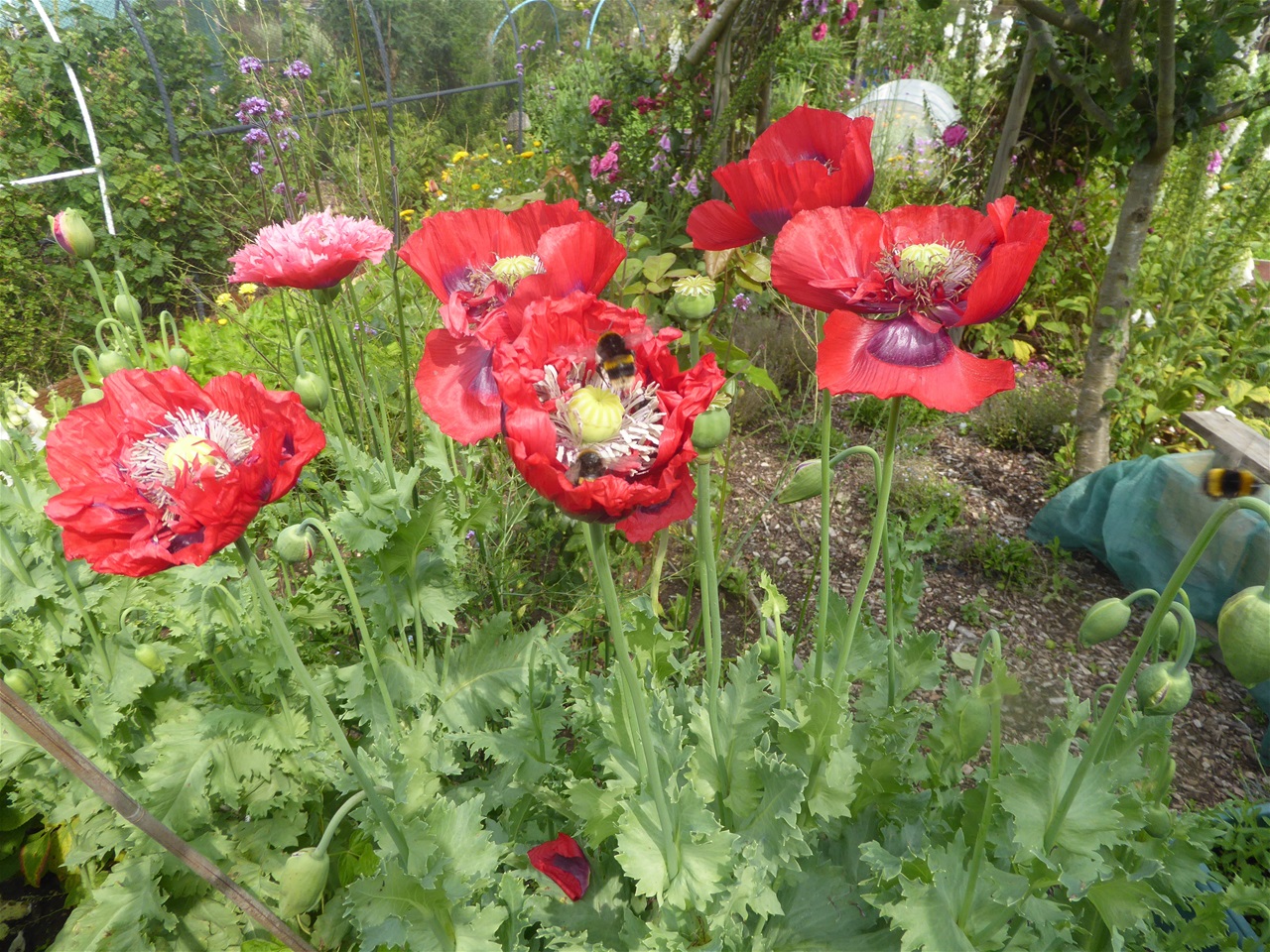
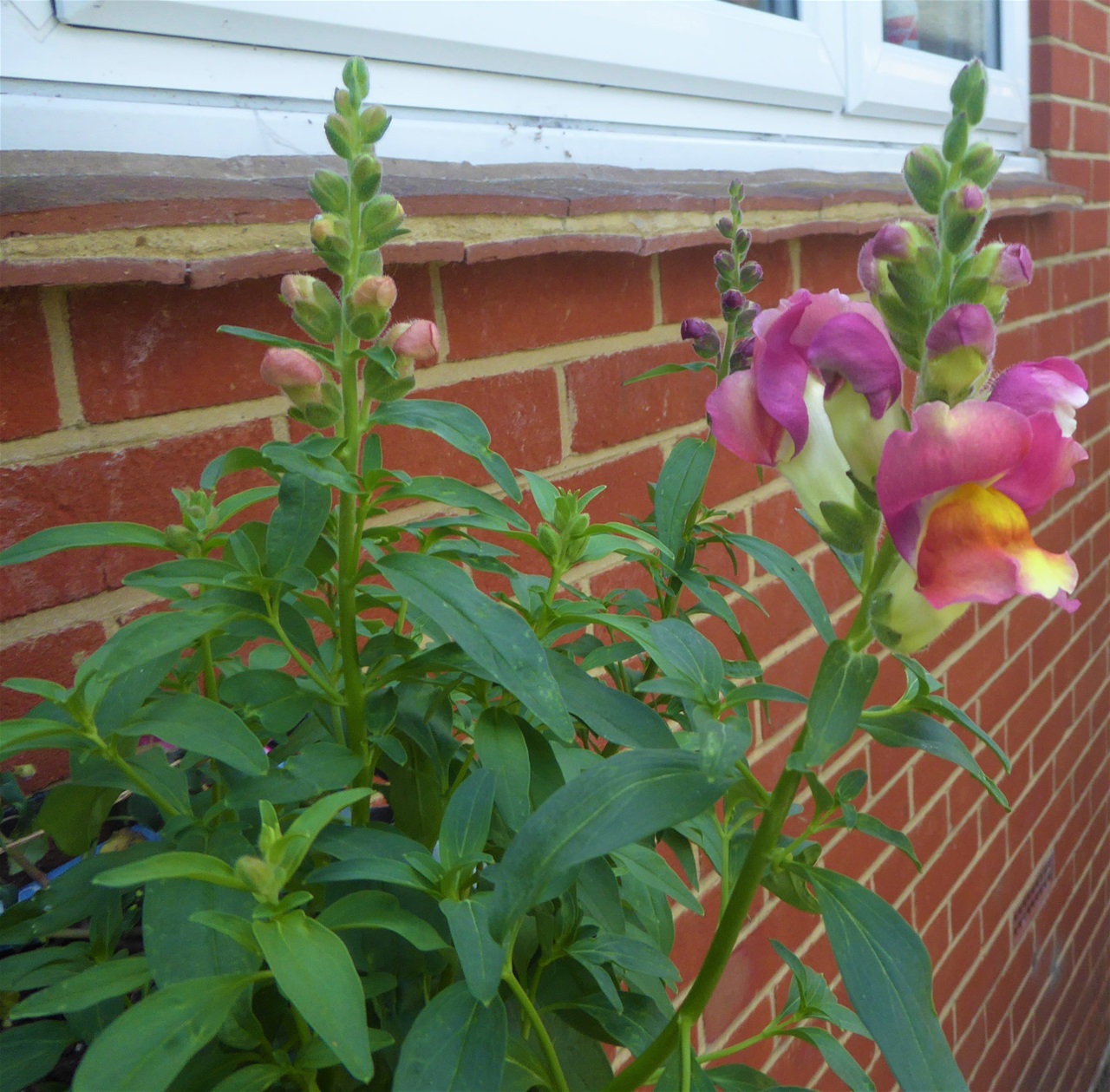
Dave@HappyAcres
My goodness, it was hotter there than it was here! Those carrots and Zephyr squash look lovely together. I struggle to grow carrots and yours look great!
Kathy
Carrot-growing is a bit hit or miss but taking lots of stones out of the soil and adding a bit of sand does help, plus the anti-fly mesh too of course
Dave@HappyAcres
It is great to see all the different beneficial insects! The butterflies are lovely too. You seem to have more kinds than we do, though we do have a lot of the ones we do have.
Kathy
Yes a lot of the butterflies seem to be the same or very similar to where you live in the US Dave. The insects are a sign things are healthy I reckon!
Kathy
Sue,we are fortunate to have a wide range of plants they use for breeding, as well as feeding, which helps boost numbers
Lea
What a wonderful assortment of vegetables! And I love the flowers, too!
Thanks for your comment on my blog.
Lea @ Lea's Menagerie
Kathy
Thank you Lea. I do grow a lot of flowers as insects love them as well as giving lots to cut to bring home
Sue Garrett
I love the insect photos, I'm hoping we have more butterflies this year as they have been lacking in number over the last two years
Kathy
It is great to have such a choice of berries to eat/cook/preserve at this time in the year...moving on to blackberries here soon, too!
Dave@HappyAcres
What a lovely collection of berries you have! I thought about making blueberry jam myself but in the end decided we enjoyed eating them fresh. I did make a blackberry/blueberry crisp with a few.
Dave@HappyAcres
I have a large clump of Monarda here. It took a couple of years to take off, but now it is going great and the bees and butterflies love it! Your calabrese is lovely, and I'll have to try the stalks.
Kathy
I am hoping to be able to move the Monarda out of the pot into the ground in the Autumn as it is huge! Peel the calabrese stalks first and they are delicious!
Kathy
Thanks Mark. What a shame about your parsnips... I could always trade some of mine for some wild fungi in the Autumn lol Maybe try covering the bed once sown until the seeds germinate?
Mark Willis
What a great collection of veg! I'm sad to have no Parsnips to thin this year - mine were a total washout, 0% even after a second sowing.